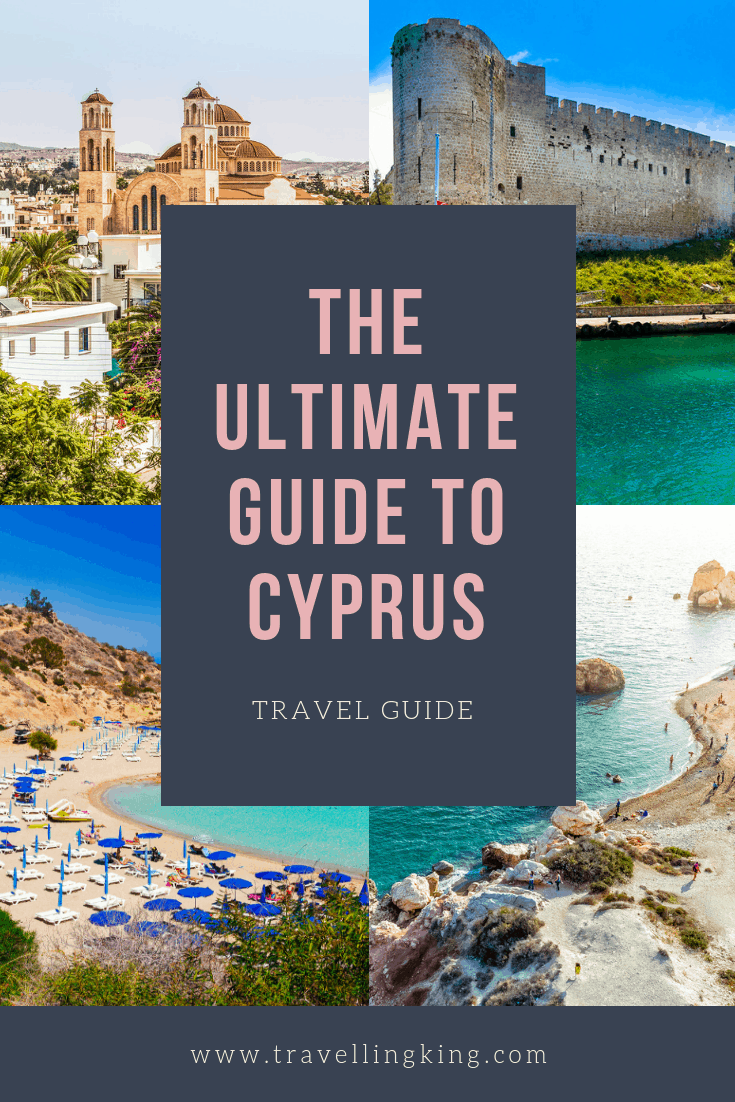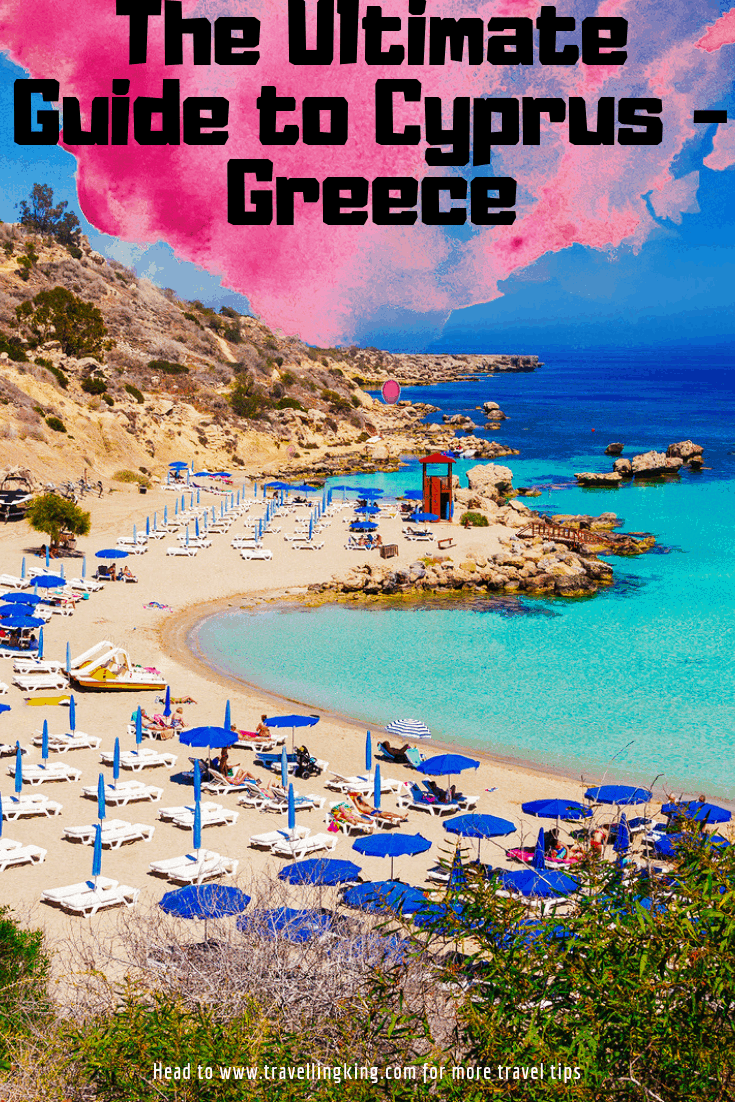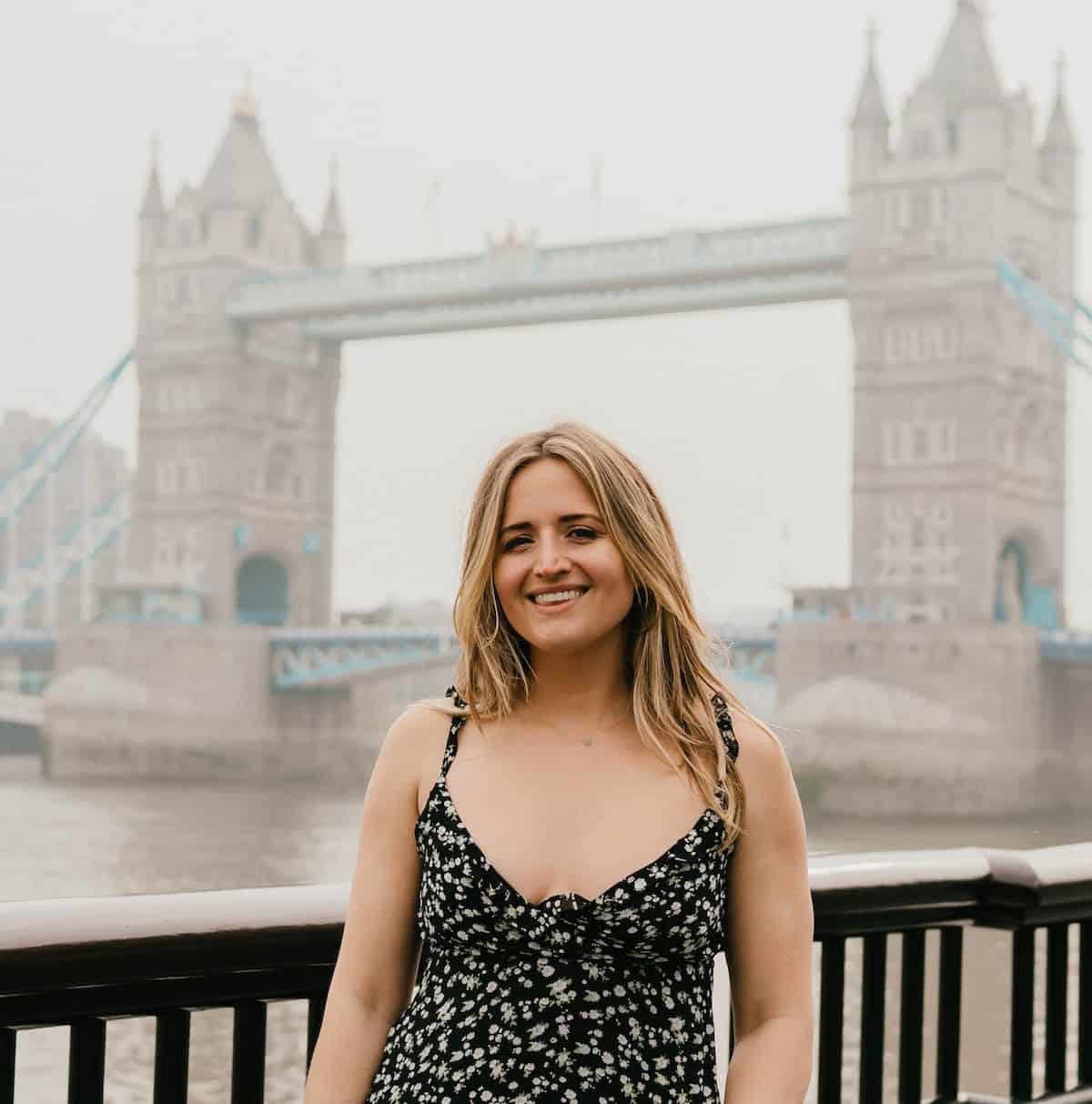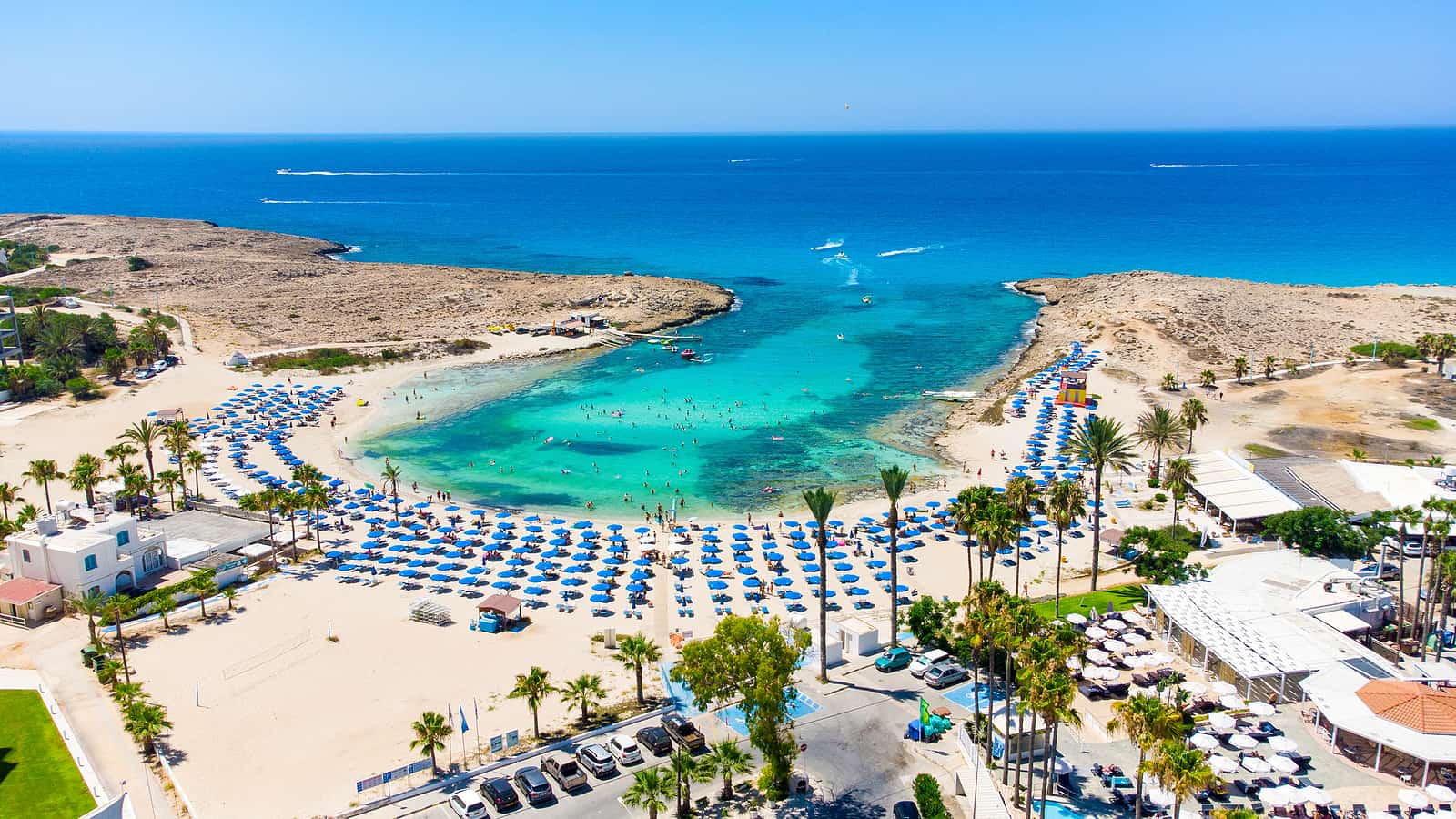The Ultimate Guide to Cyprus
Cyprus is a small island in the Mediterranean Sea that legends say was the birthplace of Aphrodite, the Greek Goddess of Love, who rose from the deep blue waters. The island was described by a famous Greek Cypriot Poet, Leonidas Malenis, as “a golden green leaf thrown into the sea”.
He described the fertile agricultural expanses, beautiful beaches and the towering mountains that make up the enchanting landscape of this island which you can discover for yourself and fall in love with its Mediterranean charm.
Cyprus, despite being a Greek island, was a crown colony of the British since 1925 but gained its independence in 1960. In 1975 the Turkish military invaded Cyprus and reclaimed the Northern part of the island, creating a border which slices the island in half.
The invasion was due to long-standing tensions between the Greek Cypriot majority and the Turkish Cypriot minority and the invasion has caused a lot of tension today across the Green Line, a militarised border that runs between the North and the South that intersects Nicosia, Europe’s last divided city.
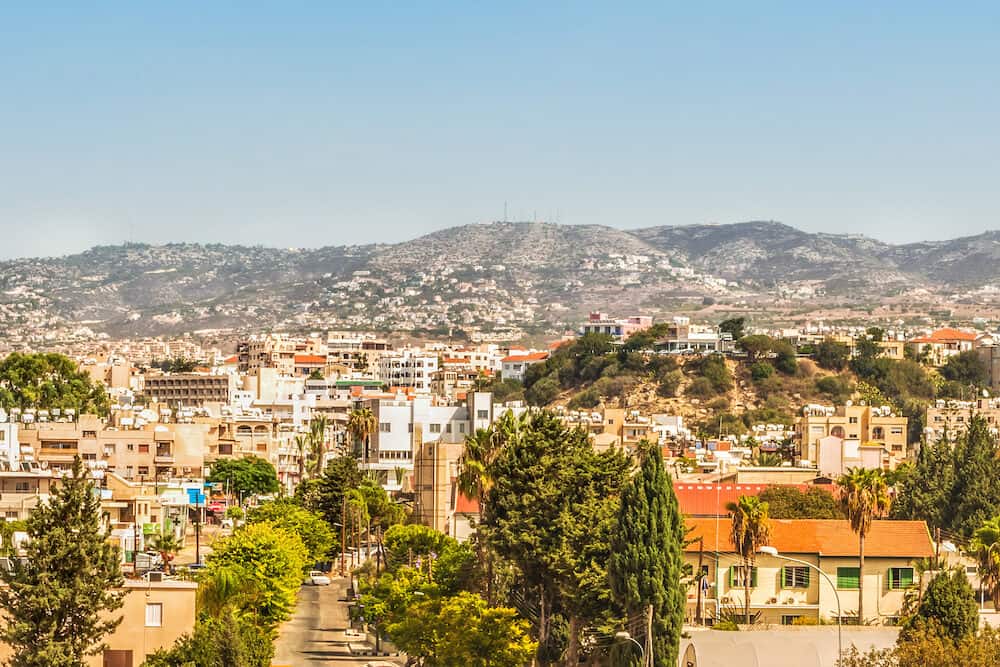
The busy resort towns of Larnaca, Limassol and Paphos offer beautiful beaches and deep turquoise waters, whilst the Troodos Mountains, just a short distance away even offer skiing and hiking activities as well as beautiful forest landscapes and deep, plummeting gorges. In Ayia Napa, there is a loud and lively party scene and the Akamas Peninsula offers stunning, rugged and remote beaches and wildlife.
The general atmosphere is relaxed and sleepy and you will find plenty of old men sipping bitter black Cypriot coffee in the local cafes, watching the world go by and playing backgammon.
Cyprus is popular as a tourist destination that has recently fallen out of the public eye after the financial crisis, which deeply affected the economy there. Cyprus makes a great place to visit for medieval, sleepy villages, beach holidays and amazing Greek food and is the perfect place to immerse yourself in the local culture.
The attraction of northern Cyprus is its wild natural beauty, from its azure blue seas abundant with marine life, its sandy beaches along the coastline, its mountain peaks. Aside from endless beautiful and unspoilt beaches, the local towns and villages are charming and authentic, and must-visits include the capital, Lefkosia and smaller towns like Girne and Gazimağusa.
Though the country has been split in two and the north later became a republic only recognized by Turkey itself, Northern Cyprus ranks as safer to travel to than the South, boasting a low crime rate.
This makes it an excellent destination to experience the charms of Cyprus while giving you insight into the interesting cultural fusion that was spurred by the combination of its Greek Cypriot roots and history and the Muslim Turkish influence since the 1970s.
If you’re looking for a destination which has not been overrun with tourists and still retains local and authentic charm, Northern Cyprus has plenty to offer. Visitors comparing the north to the south may say that the north lacks sophistication and infrastructure in comparison to the more developed tourism industry of the south, but what it lacks it more than compensates for in its nature and rugged charm.
Like the south, it enjoys over 300 days a year of sunshine making it the ideal winter sun destination or summer escape to get away from the crowds.
This ultimate travel guide to Cyprus will show you all the most beautiful places in Cyprus, what to expect when visiting, where to stay in Cyprus and things to do in Cyprus which will help you in planning a trip to Cyprus.
Plan your trip
Save on fees abroad with the Wise Card—use it at ATMs, restaurants, and for flights or hotels in over 150 countries. Manage 40+ currencies in real-time with the Wise app.
Need Help Planning?
- Cheap Flights: Find the best deals.
- Accommodation: From hostels to luxury stays.
- Car Rental: Affordable options worldwide.
- Sightseeing Tours: Explore without breaking the bank.
- Travel Adapter: One adapter for all your needs.
- Travel Insurance: Don’t risk it—stay covered.
This post includes affiliate links. Read my full disclosure and content policy.
How to get to Cyprus
As Cyprus is an island, the options to get there are quite limited. Some visitors choose to visit on a cruise ship but most tourists who want to visit the island arrive by Air to Larnaca Airport. Paphos also has an airport that only caters for charter flights.
There are many cheap flight options available from Europe. Unfortunately, there are no flights directly from Africa, Australia, Asia, South America or the United States to Cyprus.
The bitter split between the north and south echoes until the present day and therefore, if you want to visit both parts of Cyprus you have to fly into Larnaca Airport, where you will obtain an official entry and exit stamp for Cyprus.
If you fly into Northern Cyprus from Turkey you will not be allowed to cross over into the south as it is perceived by Southern Cyprus as illegal entry into the country.
There are no bus services travelling from Larnaca Airport to the north,however there are private car companies that can book a subsidized taxi to take you across the border.
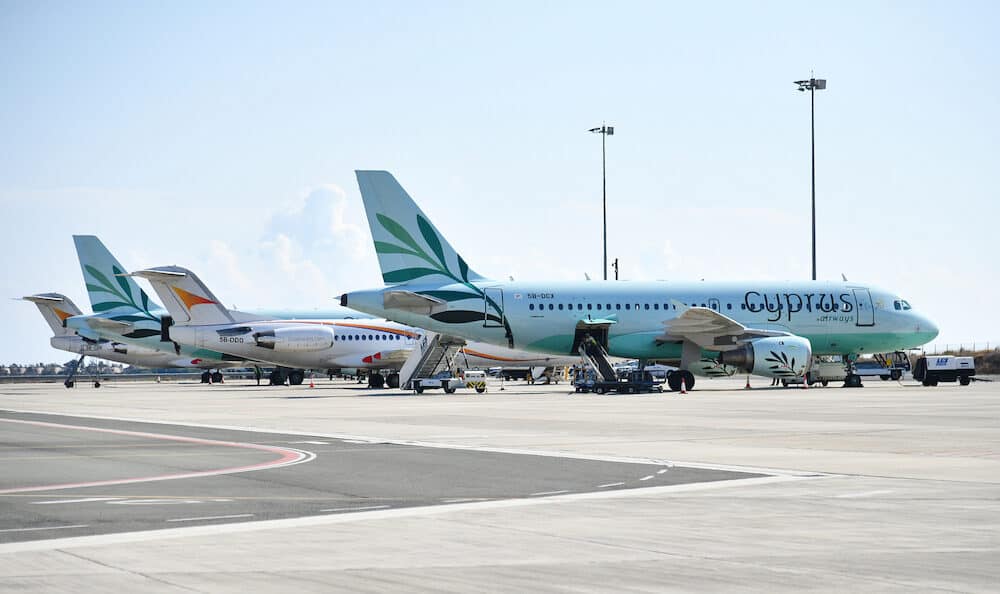
How to get around Cyprus
When you arrive at Larnaca International Airport, you can get to your destination via the public bus system that takes you to the city centre from Monday to Saturday, however, bear in mind that the service stops in the early evening.
Buses from Paphos Airport run almost every hour until midnight main bus terminal on the seafront during the months of May to October.
A safe and comfortable way to get around is by airport metred taxi, the average journey from Larnaca Airport costs around about €15-€20 to the city centre. From Paphos airport, the ride to the centre costs €25. Some opt for private shuttles and it is worth checking with your hotel to see if they offer this service.
For getting around the towns, taxi is also a cheap option however, most taxis don’t have metres and you will need to establish a price before hopping in. Alternatively, there are five bus companies which cater to transportation in Cyprus and operate a punctual service.
The most convenient option to get around Norther Cyrpus is to rent a car which will allow you to drive and explore the island freely. A 4×4 is highly recommended if you want to go off-road and discover more untouched and pristine areas and beaches of the island.
There are various options for getting around but if you intend on doing some exploration or hiking, car rental is highly-recommended to give you freedom to explore the countryside and discover small villages.
Within cities, taxis are a convenient method of transportation but none of the taxis are metred and fare should be negotiated before getting in. There are also some taxis operating like a bus, these are called “dolmush” where they pick up different passengers and split the price between all of them.
The local buses and minibuses are efficient and run every 15 to 20 minutes. A single journey may cost only 3 Lira which makes it an incredibly affordable method of transportation. After 5pm the buses start to run more infrequently and in weekends they provide minimal service.
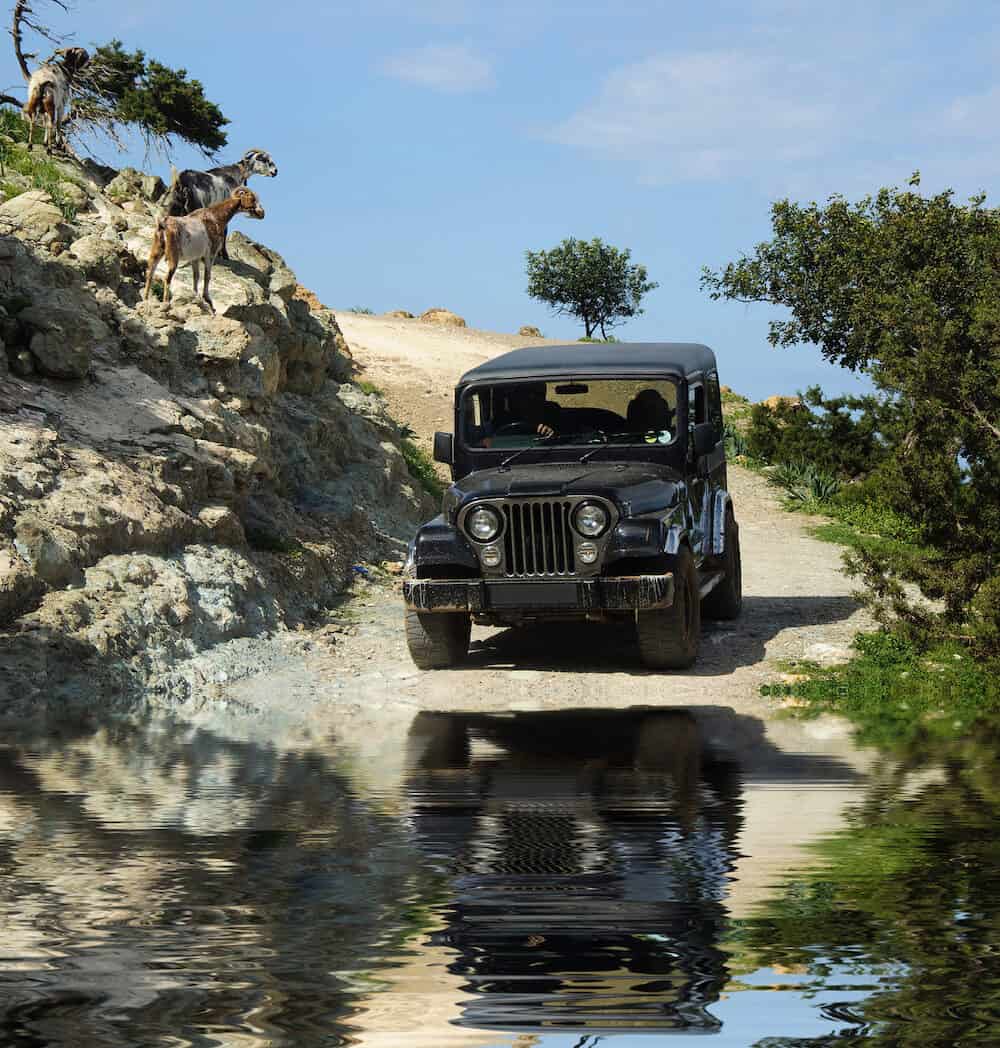
What to expect in Cyprus
Cyprus is a beautiful and safe island to visit, the people are very warm and friendly. The language spoken in the Southern part of Cyprus is Greek and most people will speak some basic English as this has been an English tourist haven for many decades.
Cypriots are very warm and welcoming people and it is considered rude to decline any food offered by locals and they will try to feed you!
Visas for Cyprus are not required to be able to visit, however your passport must be valid for at least three months past the date of your stay in Cyprus. Some countries such as Norway, Liechtenstein, Switzerland and Iceland are exempt from this and only require an ID card to enter.
Northern Cyprus is a more rugged and authentic place to visit in comparison with the well-developed tourism machine of the south. Here you will find the coastline to be undeveloped, not lined with endless resorts and tourist restaurants and businesses. This means that you can find many unspoilt beaches along the coast with very few tourists.
In general, the tourism infrastructure is a little run-down and neglected when compared with southern Cyprus, but it has a charming and real feel of island life.
It’s also a much more affordable destination than the south, eating out is cheap, with a three course meal including wine costing around only €20. The local currency is the Turkish Lira which you can take out from local ATMs, however the US Dollars and Euros are accepted in many places.
Northern Cyprus is also 99% Muslim and it is advisable to wear modest clothing and cover your arms and legs away from the beaches and when visiting historic sites and museums. Despite being mostly Muslim, there are sleazy night clubs and brothels on the outskirts of some towns where Turkish holidaymakers escape and seek to let loose from the constraints of Turkish societal restrictions.
Northern Cyprus is a safe holiday destination and has a low crime rate, lower than in the south. Female travellers should dress modestly in the cities and away from the beaches and solo women may find the local men eager to flirt with you or stare at you, always be aware of your drink as there have been some incidences of use of “date rape” drugs.
If you intend on doing some hiking and exploring in the countryside be aware of poisonous snakes, there are three different types, and you should try to avoid walking through long grass and putting your limbs in any crevices.
The currency used in Cyprus is the Euro. Credit cards are widely accepted but it’s advisable to carry some notes and small change for buying small items like a bus ticket or food and drink. Tipping in bars is not required and in restaurants it is advisable to tip 10% of your bill.
As Cyprus was formerly a Crown colony of Britain, they drive on the left hand side and use UK 3-prong plugs for electrical output, so a UK adapter may be required.
There is usually a siesta period between 14:00 pm and 17:00 pm where most shops will be closed. They reopen again in the evenings until around 21:00 pm, so don’t try to get anything done during their siesta time! Also many shops open only half days on Saturdays and close completely on Sundays. In the main tourist stretches, most shops will stay open and you will be able to purchase your essentials.
Dress is usually casual in Cyprus, however it is worth bearing in mind that part of the population is Muslim, whilst the other part is Greek Orthodox and you should cover your shoulders and legs when entering a place of worship out of respect. In general, it is advisable to dress modestly as it remains a very patriarchal society and solo female travellers should be aware of this when travelling around Cyprus.
The rate of violent crime is incredibly low but there are always pickpockets, especially in the peak holiday periods so be wary of your possessions when you’re in a public place or on a beach.
Cyprus is a divided and polarised country, it is important when visiting Nicosia to not attempt to cross the buffer zone to the Northern side, away from official checkpoints.
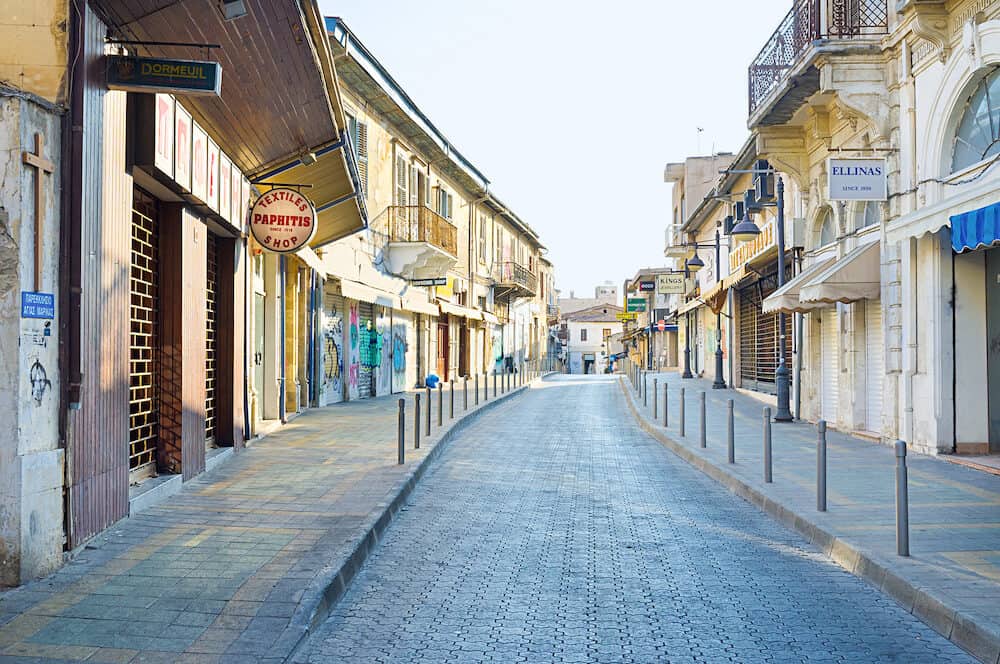
The best time to visit Cyprus
Cyprus has over 300 days of sunshine a year so chances are you will be able to enjoy some Mediterranean sunshine and clear blue skies during your stay, it is a popular choice for people seeking winter sun and beach holidays but has yet to become a major tourist destination.
Springtime from March to April is an excellent time to visit as wildflowers burst into bloom and the fields are full of colourful poppies, bougainvillea and buttercups. May and June are ideal for travelling to Cyprus, however it is best to avoid July and August as the weather is incredibly hot.
Autumn is also an excellent time to visit, in the months of September and October you can even participate in local harvest festivals for olives and carobs for a taste of the local culture and traditions.
The summers can be very hot, temperatures may soar over 30°C and the climate is humid on the coast and also can be very dry away from the sea. Winters in Cyprus are incredibly mild with an average maximum of 16°C and lows of 8°C, this makes winter a prime holiday season for European tourists.
The mountainous regions are much cooler in the summertime and are usually around 5-10°C less, the locals usually escape to the mountains during the sweltering heat of summertime and the cities are much quieter.
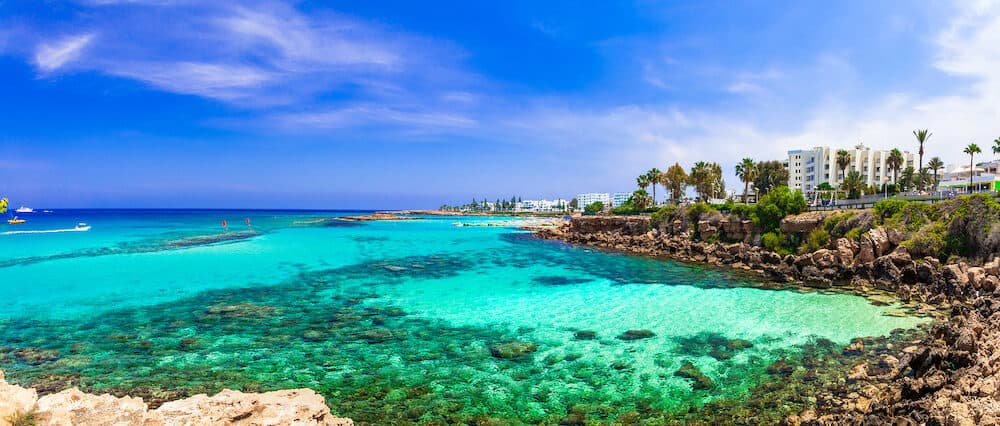
Things to do in Southern Cyprus
Hit the beaches
Cyprus has some of the best and cleanest beaches in Europe with over 50 Blue Flag beaches! There are beaches to suit every kind of traveller in Cyprus, from the quieter and rugged coastlines to the popular and touristy beaches.
The busiest and most accessible tourist beaches are Sunrise Beach and Fig Tree Beach in Protaras, Nissi Beach in Ayia Napa, Makronissos Beach in Ayia Napa, Mackenzie Beach in Larnaca and Papho’s Coral Bay. Here you will find more beach-going crowds and restaurants and bars around.
The quieter beaches on the island include Governor’s Beach in Limassol, Latchi Beach in Polis, Serena Bay in Protaras, Aphrodites Rock in Paphos.
If you are looking for beaches off the beaten track, you can head out to Pomos Beach in Polis or Lara Bay by 4X4. You will definitely be far from other tourists and can enjoy the rugged coastline on isolated beaches.
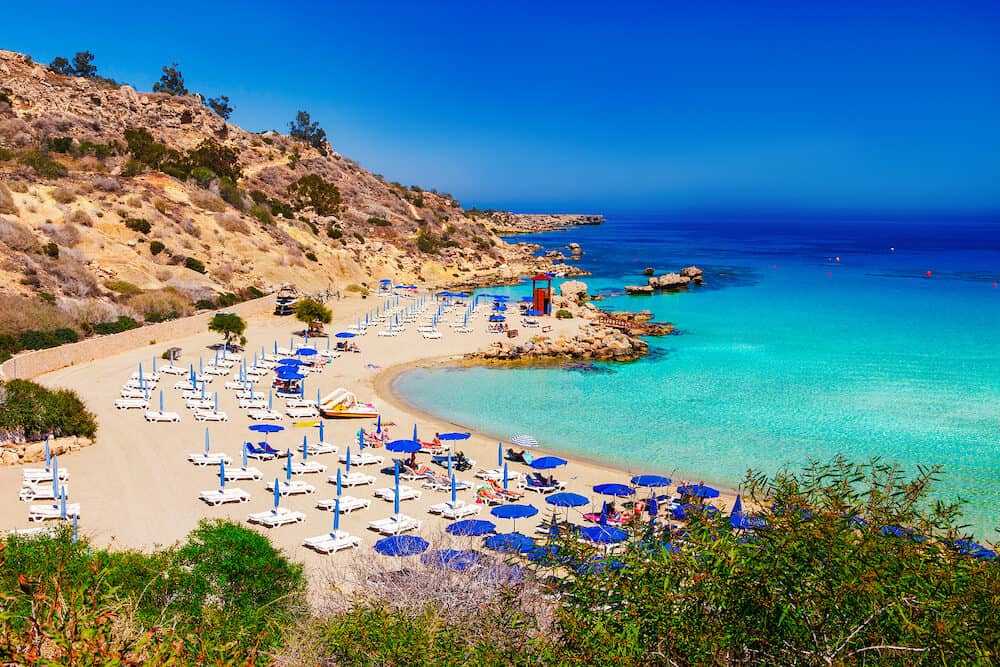
Visit the Churches and Mosques
Cyprus is a deeply religious country and there are plenty of Greek Orthodox Churches as well as historic temples and monasteries which you can visit, there are also many ruins that represent the diverse religions that were worshipped there.
The most beautiful and charming church is Agios Saranta, located just a short drive from Protaras and an uphill 30-minute walk. This church is tucked into a rock formation marked by a blue wooden door. Inside you will find a functional church dimly lit with candles and filtering sunlight in through a skylight.
Pay a visit to Church of Saint Paraskevi in the Kato Akourdalia village of Paphos which is famed for its five domed and 9th and 10th century frescoes and paintings.
Another famous church is the cave chapel of 318 Holy Fathers which has beautiful frescoes and is the final resting place of the bones of several historic saints.
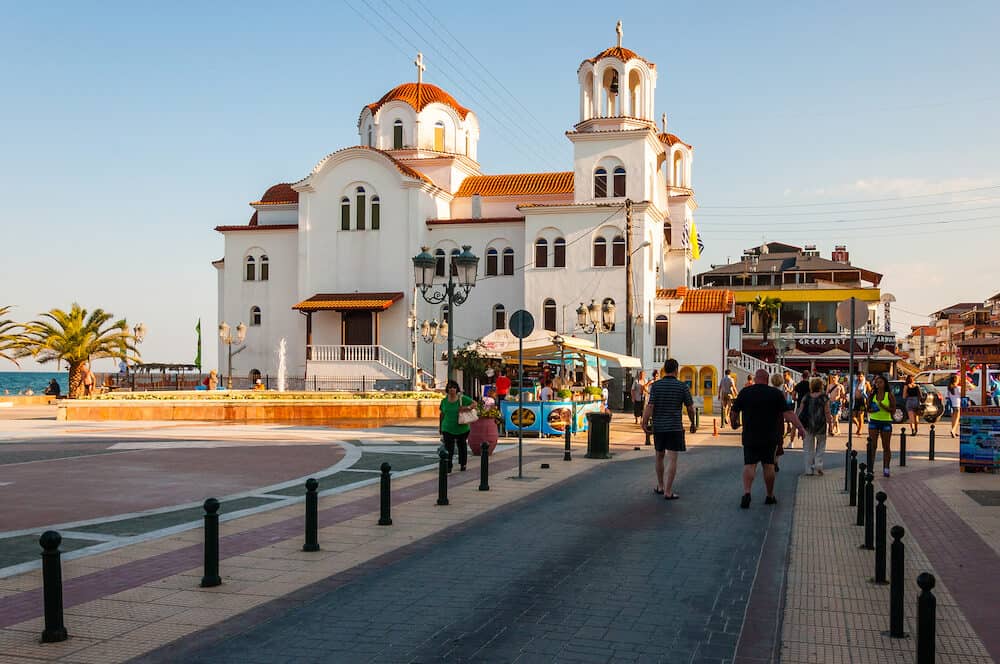
Go hiking
Cyprus is home to some stunning natural landscapes that require 4X4 access. You can also find excellent hiking routes in the Peninsula of Akamas, there are beautiful routes that take you to caverns, gorges and the coastline.
Akamas can be reached from Paphos and makes the perfect day trip, and the name of the hiking trails and local sites of interest are often named after the Greek Gods such as the Baths of Aphrodite, Aphrodite and Adonis.
You can also discover the enchanting depths of the Blue Lagoon which is a must-visit in this region.
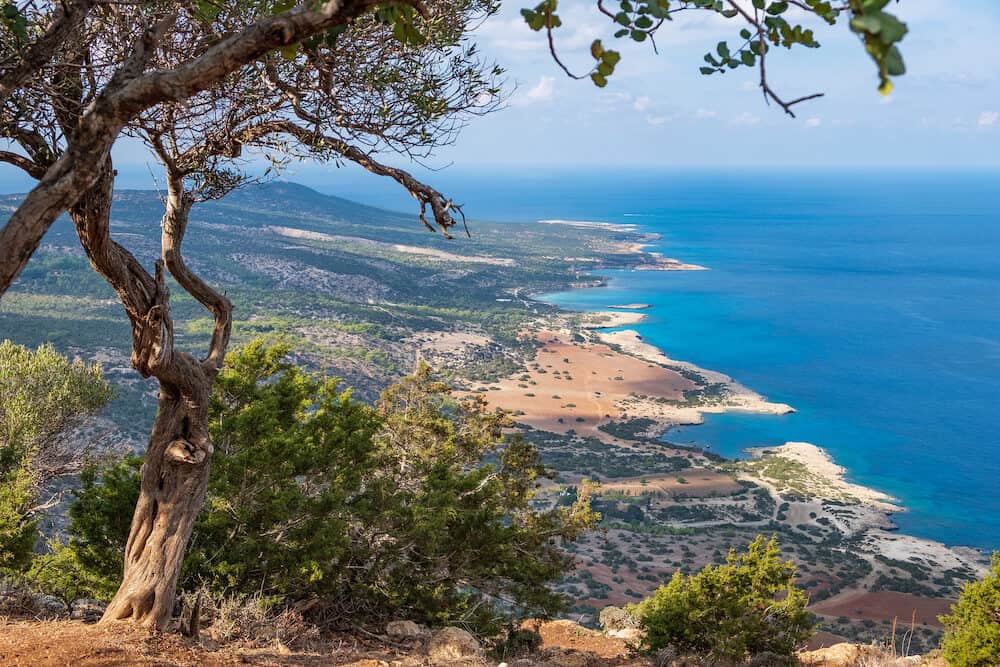
Explore an abandoned village in Trozena
Just beyond the Iron Bridge bordering both Limassol and Paphos is an abandoned village which was once inhabited by mainly Turkish Cypriots, over time people moved to the cities and abandoned the village and was left to fall into ruin.
Here you can spend some time exploring the abandoned village to see what life was once like in this remote town.
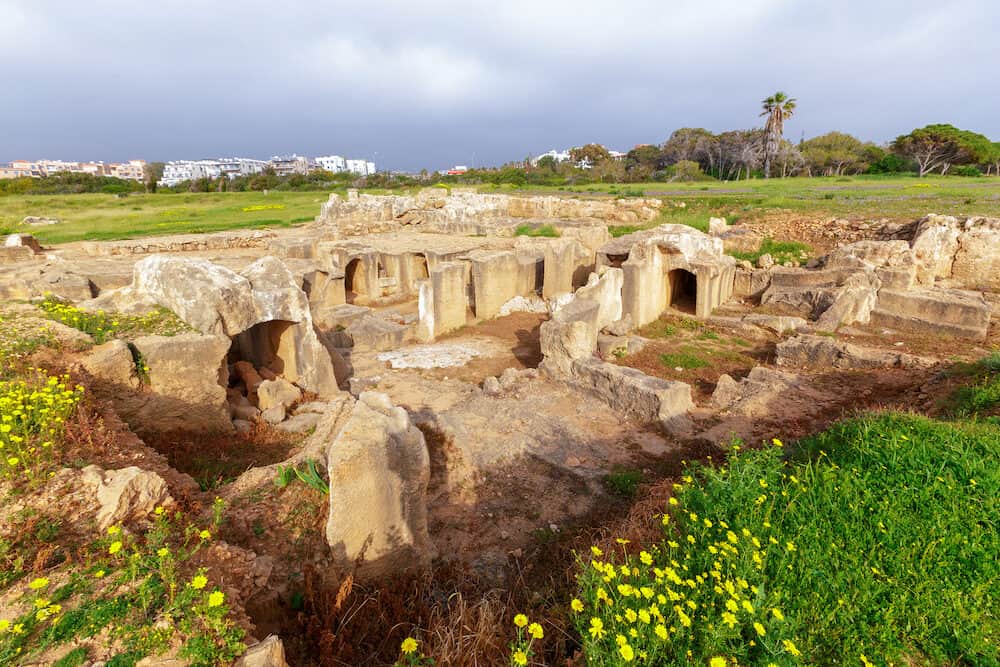
Wine tasting
Kato Polemedia, just outside of Limassol, is part of Cyprus’ rich heritage of vineyards and wine production. There are many vineyard tours and wine tastings as well as hiking and cycle paths for those who want to get out and about in the countryside.
A popular hike is the hour long trek to Alhetona, known as the Heart of Stone. Legend says that any lovers visiting Alhetona at sunset will stay together forever.
For serious wine lovers you can try the local Xynisteri wine which tastes much like a Sauvignon Blanc and hails from the Vouni Panayia winery in the Troodos Mountains.
Other wines that are excellent include Maratheftiko, a wine that is only produced in small quantities and the best can be found at the Ktima Chistoudia Vineyards and perfectly accompany the hearty, rich meat dishes such as stifado and kleftiko.
Finally, the Commanderia wine is a sweet dessert wine that is the world’s oldest branded wine and has a deep connection with the crusader past of the country.
It is a DOP wine that is only made in Limassol and is a blend of the mavro and xynisteri grapes.
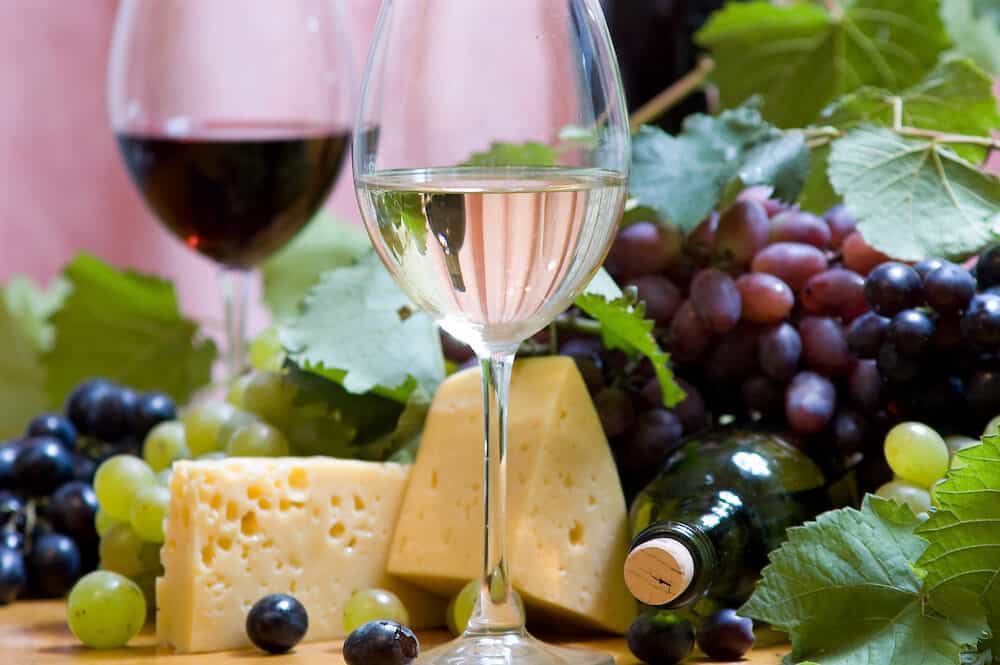
See the flamingos in winter
Pink flamingos migrate to the famous Salt Lake in Larnaca during the wintertime and the sea of pink flamingos bobbing up and down whilst fishing for small shrimps in the Salt Lake makes for a stunning spectacle of nature!
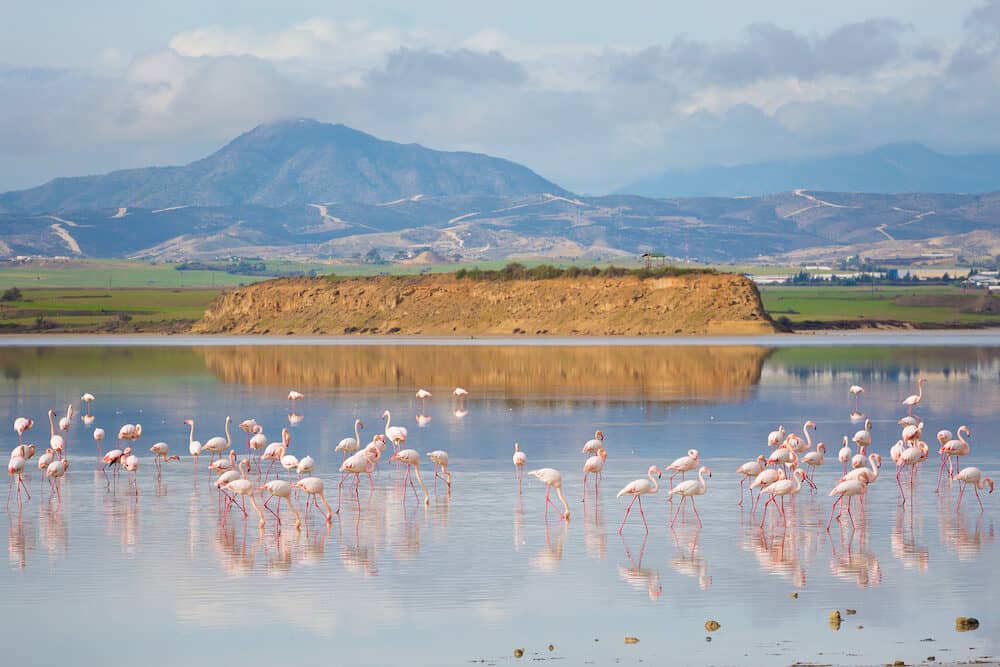
Party the night away!
If you want throbbing beats, sweaty dancing bodies and beach clubs, you can head to Ayia Napa, party central of Cyprus.
The next morning if you stroll along the beach you’ll find party goers passed out all over the beach from partying the night away. Here you can find clubs that are open all night and until the very early hours of the morning.
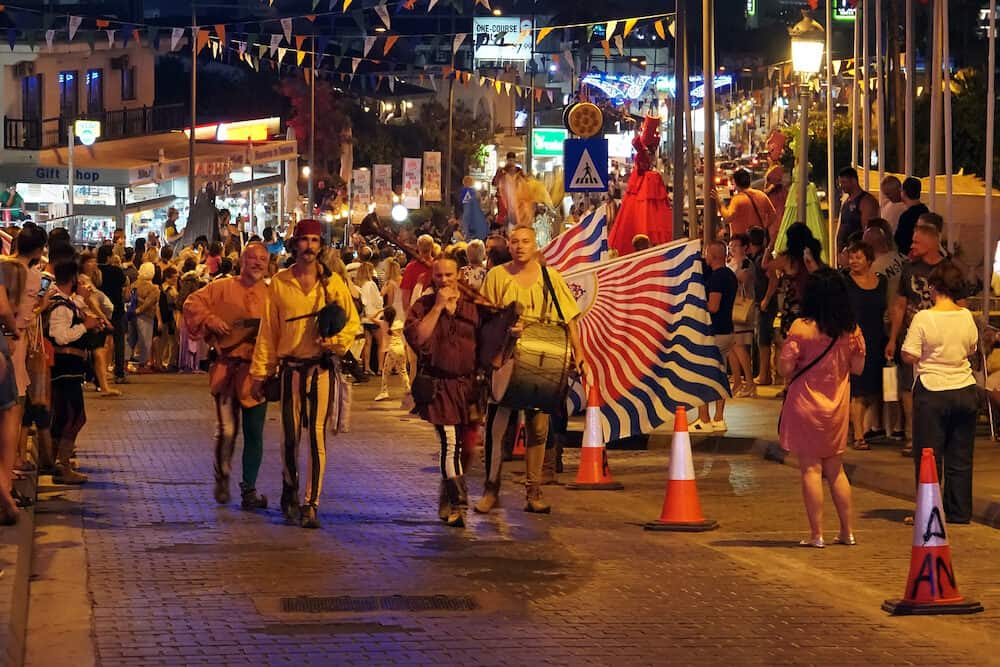
Have a Cypriot Coffee and watch the world go by
Do as the Cypriots do and enjoy a small cup of bitter Cypriot coffee in a local café, watch the world go by alongside the local elderly men who come every day to play backgammon and drink their bitter coffees. The perfect way to experience the local culture and take in the atmosphere of the town.

Things to do in Northern Cyprus
Northern Cyprus is ideal for those who love to walk and hike and get out into nature. Here are some of the best things to do:
Explore the castles
There are many castles in Northern Cyprus, each perched atop a mountain and offering fantastic views and mountain walks. You can visit St. Hilarion castle which once was a monastery built in the 10th century and later converted into a fortification.
Kyrenia is also home to some crusader castles such as Kantara Castle which can be found on the nearby mountains offering stunning panoramas of the coastline. The entrance to Kantara castle is only 7 Lira.
Finally, Buffovento Castle is situated amongst the clouds on the peak of a mountain, a 25 minute steep ascent up to the castle where you will be able to enjoy the ruins and incredible vistas of Northern Cyprus from above. Remember to pack some good walking shoes!
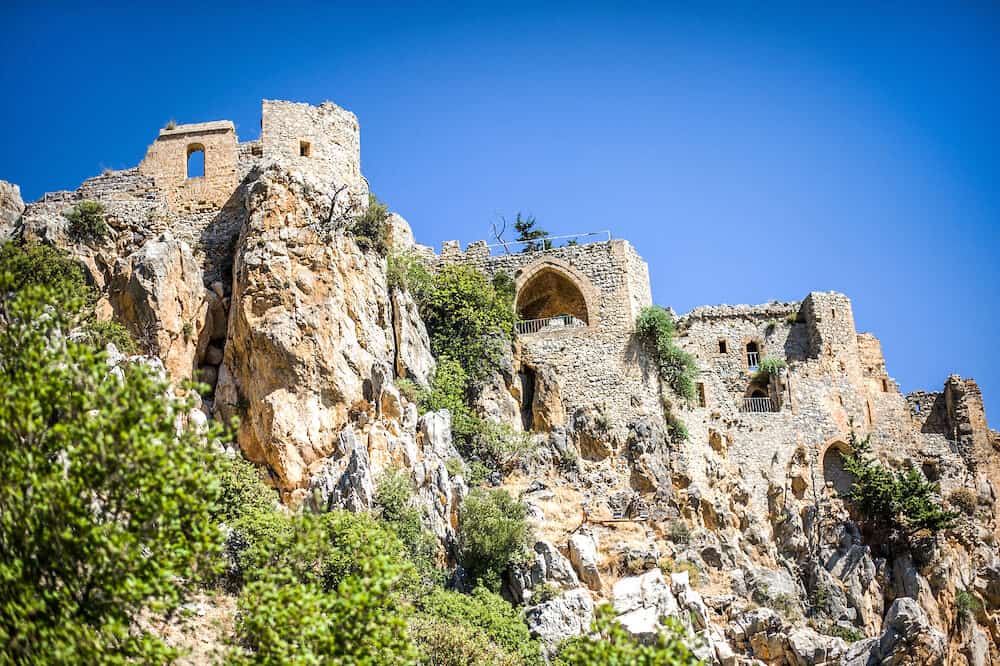
Discover deserted beaches
With a car endless opportunities will open up to you, a perfect way to spend the day is driving along the coastline to find deserted beaches, Golden Beach can be found in the Karpaz peninsula where you can explore a stretch of untouched and rugged coastline and golden sand and have it all to yourself!
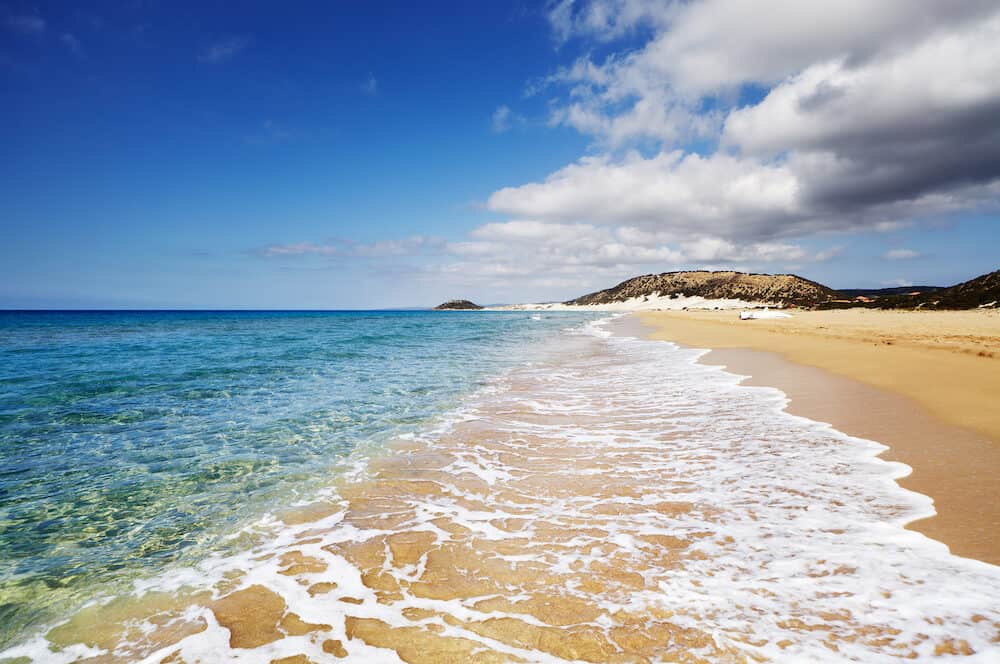
Meet the wild donkeys of Karpaz
Karpaz peninsula is one of the most untouched and virgin areas of Northern Cyprus and is home to a group of wild donkeys which were released into the wild after the Turkish Invasion.
Aside from the curious wild donkeys, you can find a variety of animals and butterflies and even 300 species of migratory birds have been recorded in this spectacular area of nature.
The peninsula is excellent for avid hikers, there are many routes for enthusiastic walkers of all levels, as well as plenty of small villages in the midst of fields of fruit orchards, olive groves and tobacco farms.
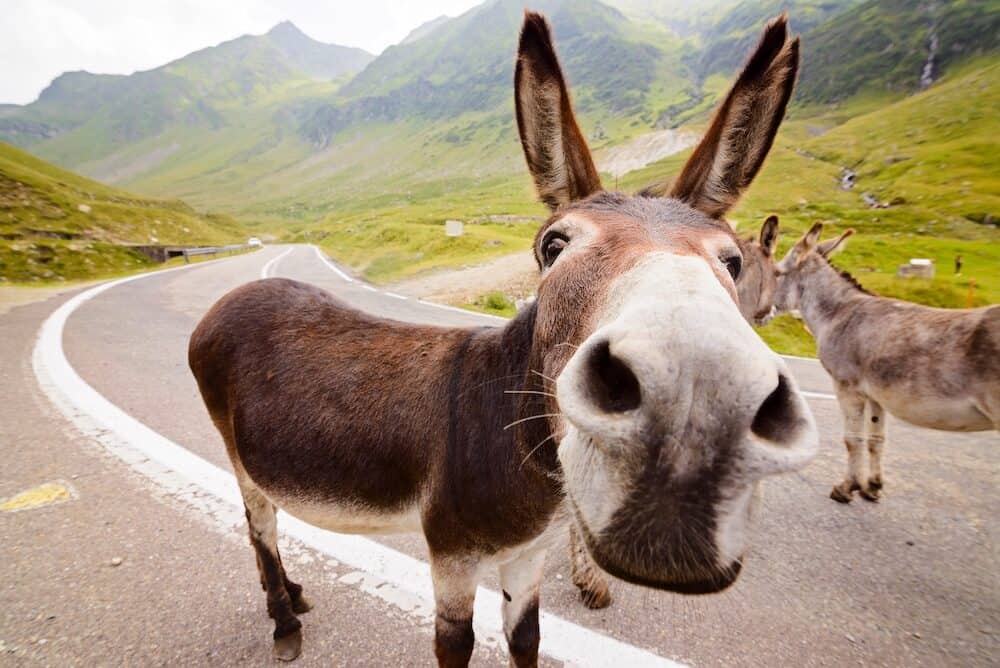
Go snorkelling and diving
Diving and snorkelling is amazing around Northern Cyprus with endless visibility and crystal clear waters and interesting rock formations and some wreck dives as well.
You can find schools of Amberjacks, stingrays, groupers, octopus and eels or you may even find a Green turtle or two, drawn to the Neptune grass growing on the shallow sloping shores of the coastline.
Green and Loggerhead turles also nest on the local beaches of Alagadi, or “Turtle Beach” in the months of March to mid-June. Visitors can come to see egg laying and hatching baby turtles path to the sea at Alagadi and also at Karşıyaka and Dipkarpaz beaches.
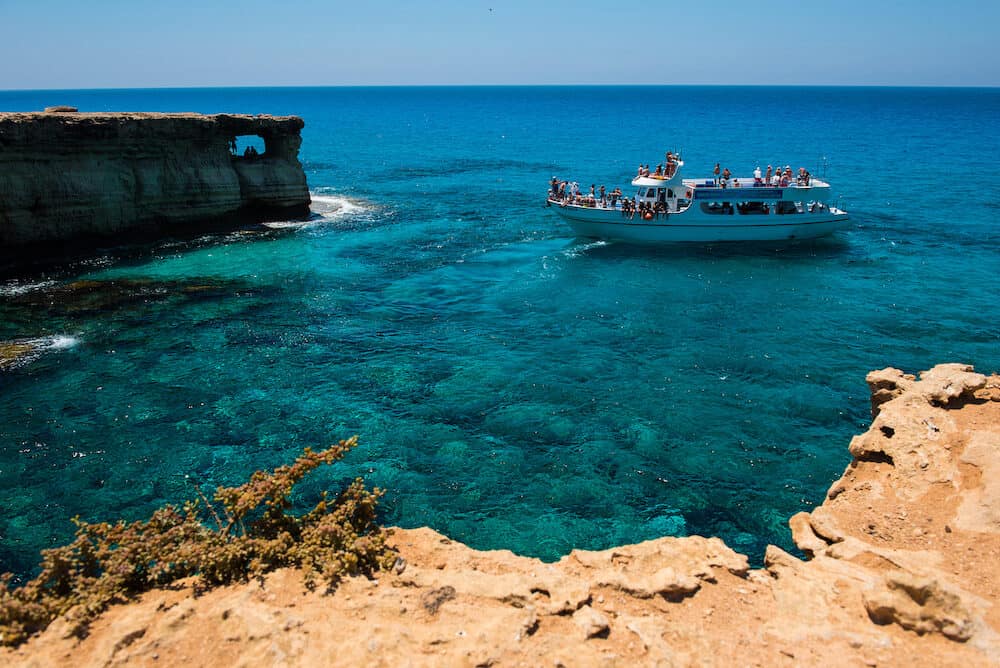
Cross the famous Green Line into Nicosia
Northern and Southern Cyprus are divided by the border known as “the Green Line” and Nicosia is the nearest Southern border city, it is one of the last remaining cities in the world which is split in two.
Nicosia has fine examples of architecture bearing its colonial roots, Muslim mosques, Gothic churches and more.
The city itself is a melting pot of Turkish and Greek culture and is a must-visit for anyone travelling to Cyprus, whether to the north or south.
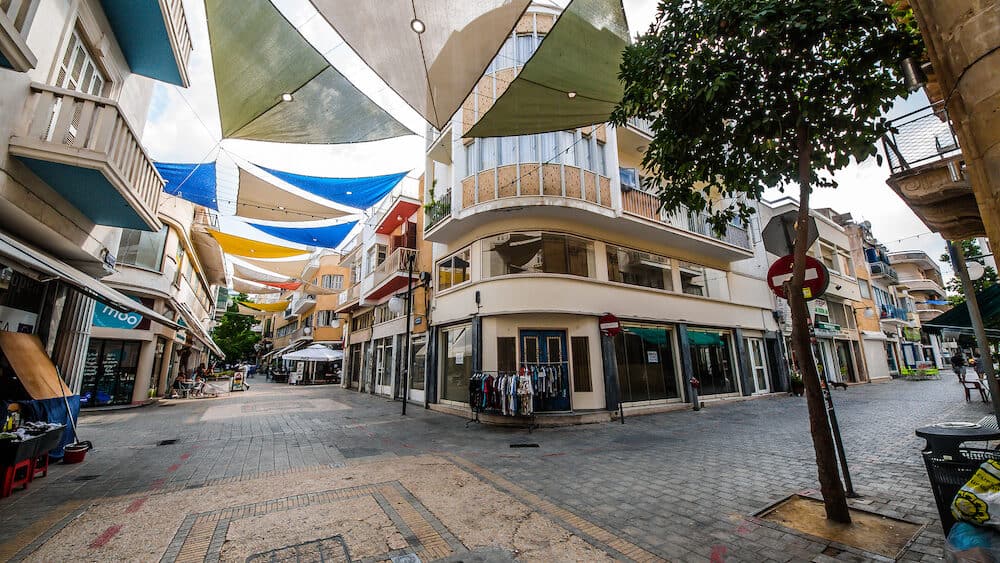
Places to visit in Southern Cyprus
The Green Line
The United Nations Buffer Zone divides the city of Nicosia into half, with part of it belonging to the Turkish Cypriots, whilst the other side belongs to the Greek Cypriots.
This 300 km border is patrolled by United Nations soldiers and makes Nicosia the only remaining divided city in Europe.
There are still many border tensions on either side of the green line due to the conflict that began with the Turkish invasion in 1974. A visit to the Green Line is a fascinating insight into the divided history of the country.
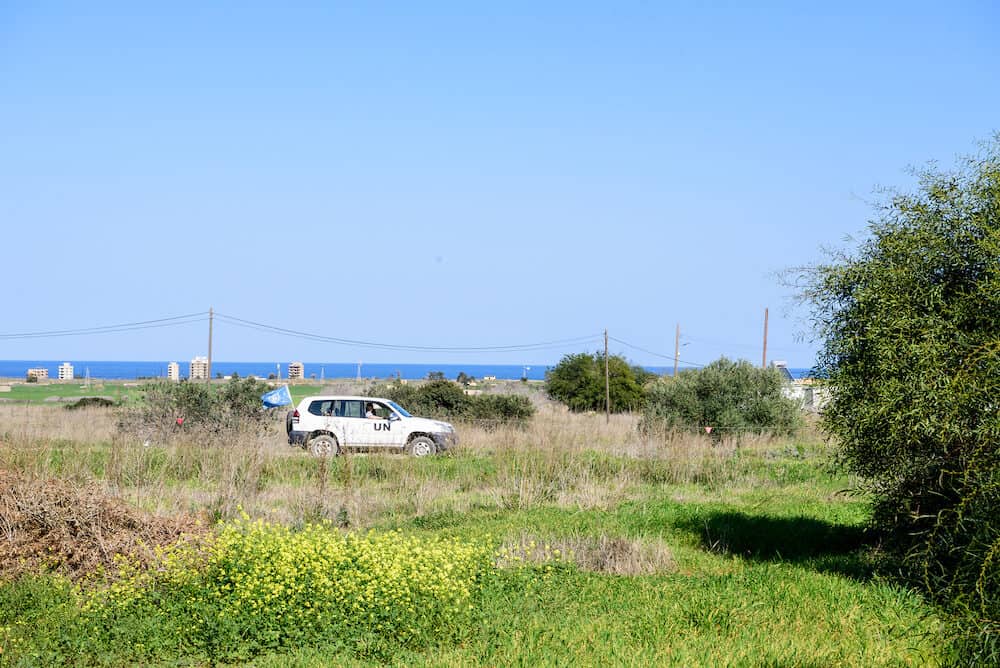
The Ventian Walls in Nicosia
The original city walls were built by the Franks in the 14th century, surrounding the city of Nicosia.
After the Venetian invasion they built sturdier walls in the 16th century as better defences, these were later improved upon by the Ottomans who invaded and added stones to the walls which you can still see today.
Around the walls you can find the trenches which are used as sports grounds and open air sculpture exhibition sites making this a pleasant stroll whilst exploring the city of Nicosia.
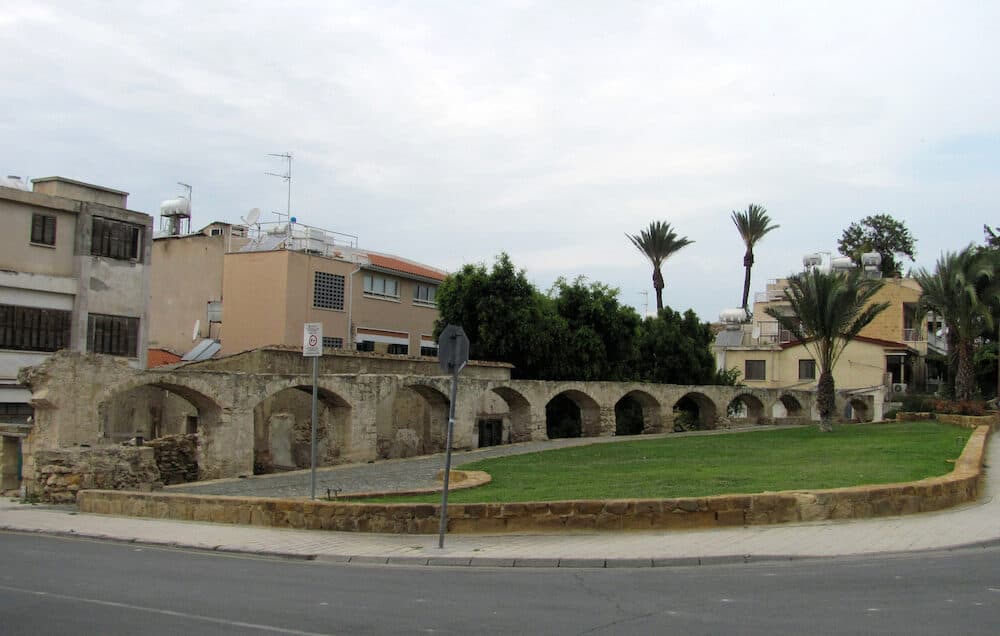
Agros
High in the Troodos Mountains, just off of Limassol, you can find the village of Agros. At 1,100 metres of elevation, this amphitheatre-shaped village sprung up around the Monastery of Great Agros which was said to have been built by forty monks who escaped from Asia Minor.
In 1894, it was destroyed by a fire and the Church of Panayia of Agros was constructed upon the ruins of the burnt monastery.
This village is still very agricultural, producing fresh fruits and vegetables and roses, which they distil into rose oil and jams, the perfect souvenirs to bring back from Cyprus.
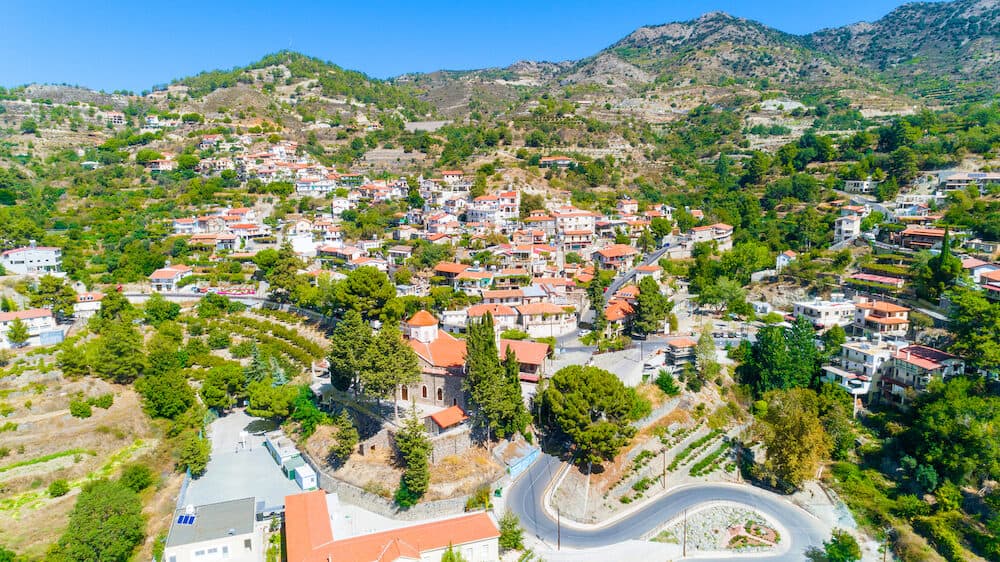
Paphos
The region of Paphos is stunning, both with its fascinating history and culture and a harbour bobbing with boats. The area is nestled between the sea and the impressive Troodos Mountains.
There is plenty to do in Paphos, from exploring its Byzantine past, wine tasting, snorkelling and scuba diving and wild nature hikes.
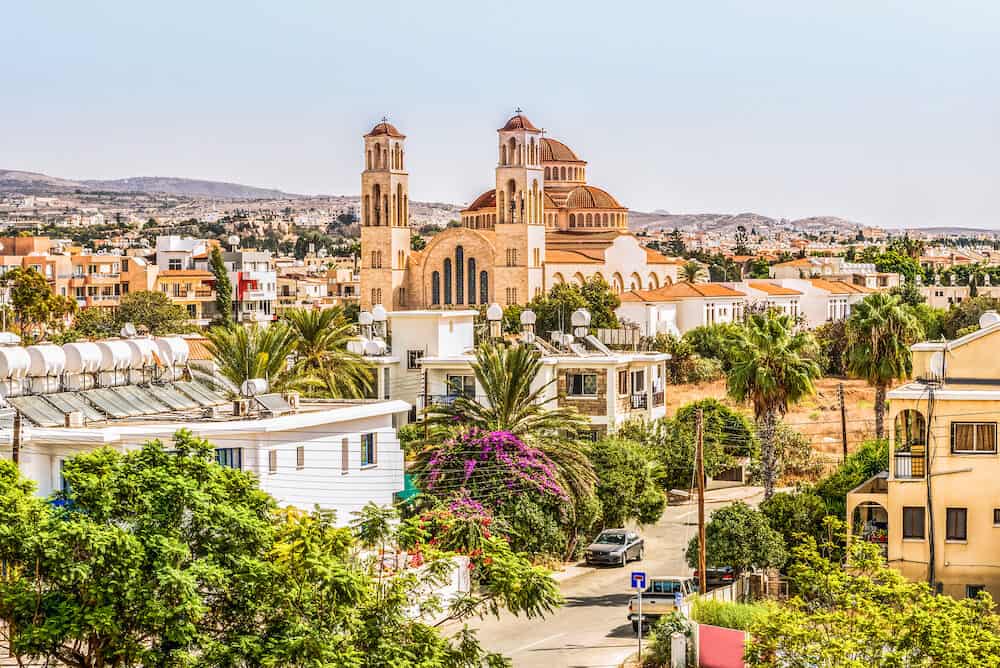
Pissouri
This charming village clings to the side of the hill and leads down to a plaza write on the beachfront and still retains its Cypriot charm.
The town square plays host to cultural events including traditional dances, you can swim out to Aphrodite’s Rock, which according to legend is where Aphrodite rose from the sea and was carried to shore on a giant seashell.
There are plenty of stunning views from an overhanging ridge in the city which offers views of the mountains, the turquoise seas and the surrounding countryside.
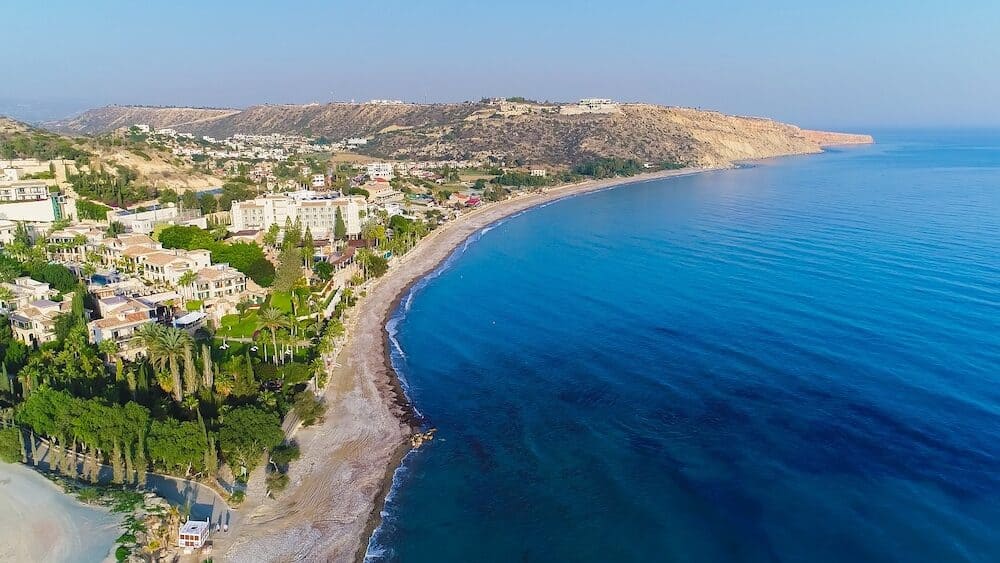
Places to visit in Northern Cyprus
Famagusta
The city of Famagusta has a fascinating historic Greek city which was converted after the invasion. Mosques sprung up where historic cathedrals once stood and there is even a fortified castle called Othello Castle, which local legend says was the backdrop of William Shakespeare’s famous play of the same name.
Famagusta was once a booming tourist haven with hundreds of tourist resorts, after the invasion, the Greek owners fled to the South, abandoning the resorts on the coastline which stand eerie and empty.
From the beach you can see the decaying buildings of past resorts which have long lost their glamour. Do NOT swim from the beach to the resort area as you could be shot for trespassing!
Outside of Famagusta you can also see the Royal Tombs, an archaeological site that was made famous in the 1950s but however has fallen into disrepair, having been pillaged and sacked by treasure hunters.
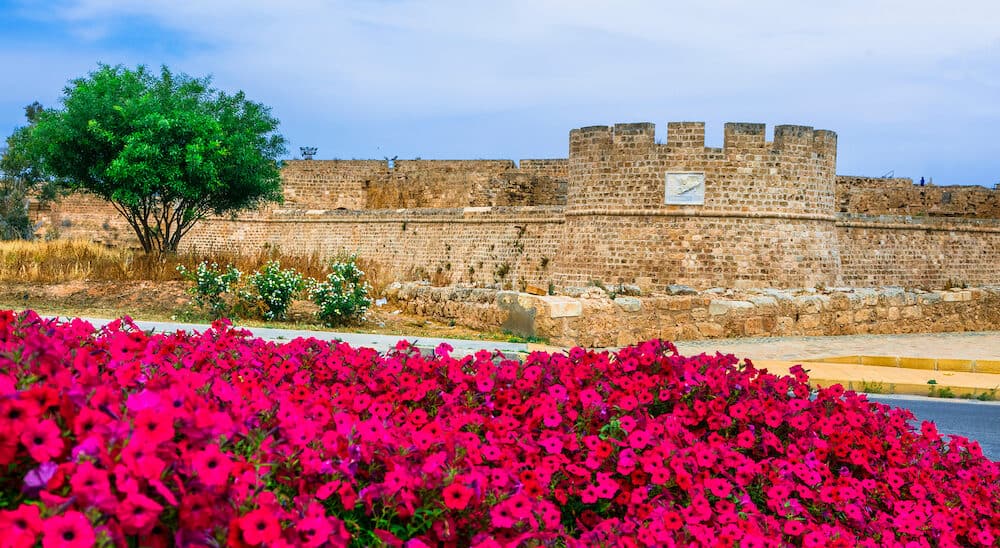
Visit the Ruins of Salamis
Just outside of Famagusta are the ruins of the historic ruins of the settlement of Salamis which was first established in 1,500 BC.
The settlement has housed Persians, Greeks and later Romans and you can find amphitheatres, towering marble columns and ruins of temples which will transport you back into the past. This site is a must-visit for history lovers.
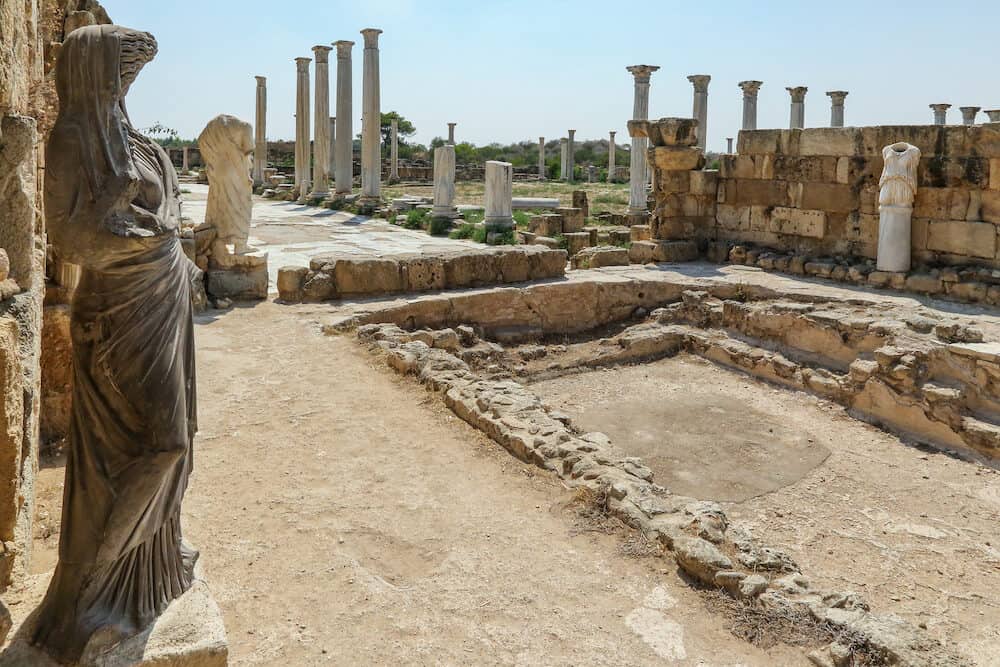
Bellapais Abbey
Near the town of Girne, there is an abbey dating back to the 12th century by monks who fleed from Palestine after the fall of Jerusalem.
The abbey is an interesting site to visit and can be reached by car or by organised tour. Entrance to the abbey costs 5 Lira.
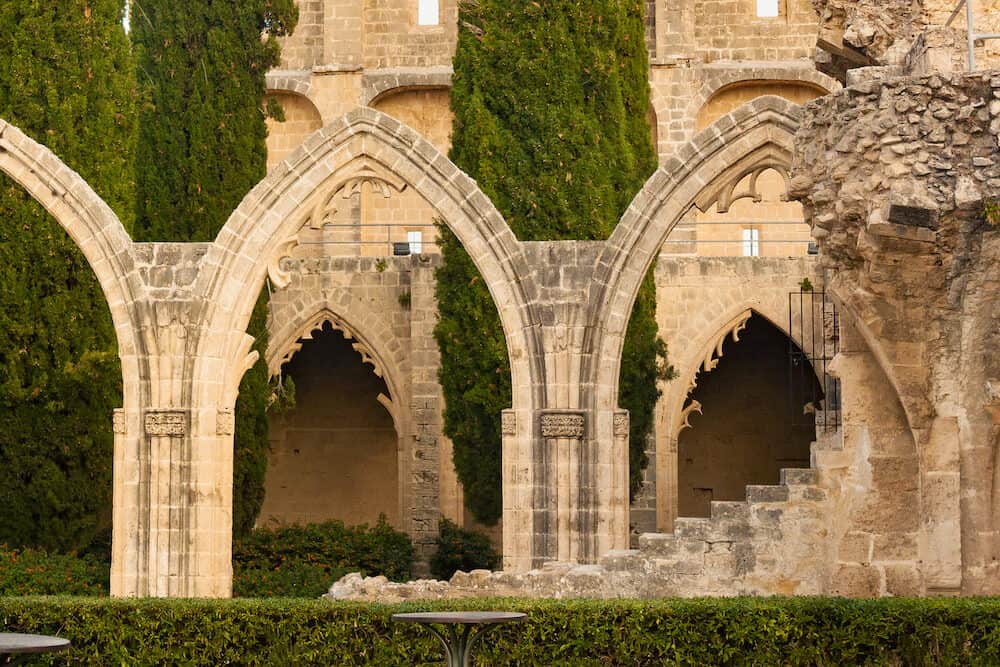
Girne
This vibrant town is a wonderful destination where you can experience the ambience and energy of the local people and culture.
You can stroll down narrow roads leading down to the harbourside and there are plenty of coffee shops with local men playing backgammon whilst drinking bitter Turkish coffee.
Stop by a local coffeeshop and savour some delicious Turkish pastries whilst people-watching and soaking in the energy of the town.
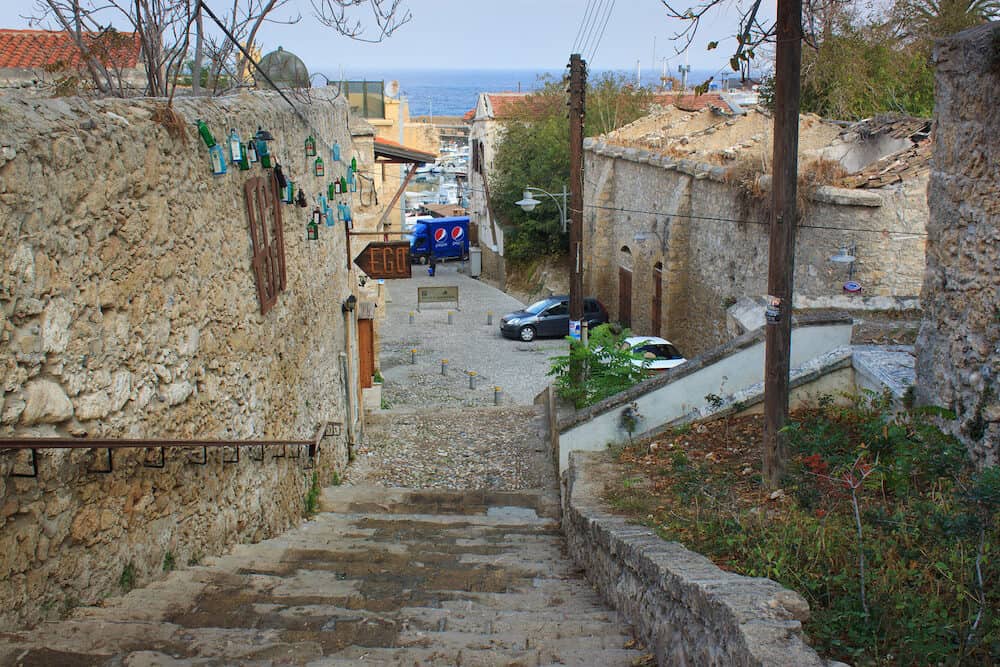
What to eat in Cyprus
Cyprus is THE place to enjoy amazing street food. There are many mouth-watering dishes available, in fact there is a way to try almost all of them!
If you’re hungry, a meze is the best solution, you can sample dozens of small dishes including sizzled meat fresh from the grill, various dips, breads and vegetables. Bear in mind that the food in Cyprus is very oriented around meat and vegetarians may find that their options are more limited than in other European countries.
The cuisine in the north and south of Cyprus is very similar, you will find Mezze, dolmas, halloumi, olives and rich dishes with meat, spices and tomatoes.
You will find a fusion of Greek and Turkish dishes, and excellent way to sample the most authentic national dishes is by ordering a meze which is a spread of many small dishes and dips which usually feature some of the best local cuisine. Make sure you bring your appetite!
Here are some of the must-try dishes in Cyprus:
Meze – This is the ultimate Cypriot meal, you can choose between a meat or fish meze and watch as a line of small dishes are brought out and served to you, everything from grilled, sizzling meats off the skewer to vegetables and a variety of breads and dips such as hummus, tzatziki and taramasalata.
You will not be disappointed! Meze is best for an empty stomach and afterwards you will definitely need to have a siesta!
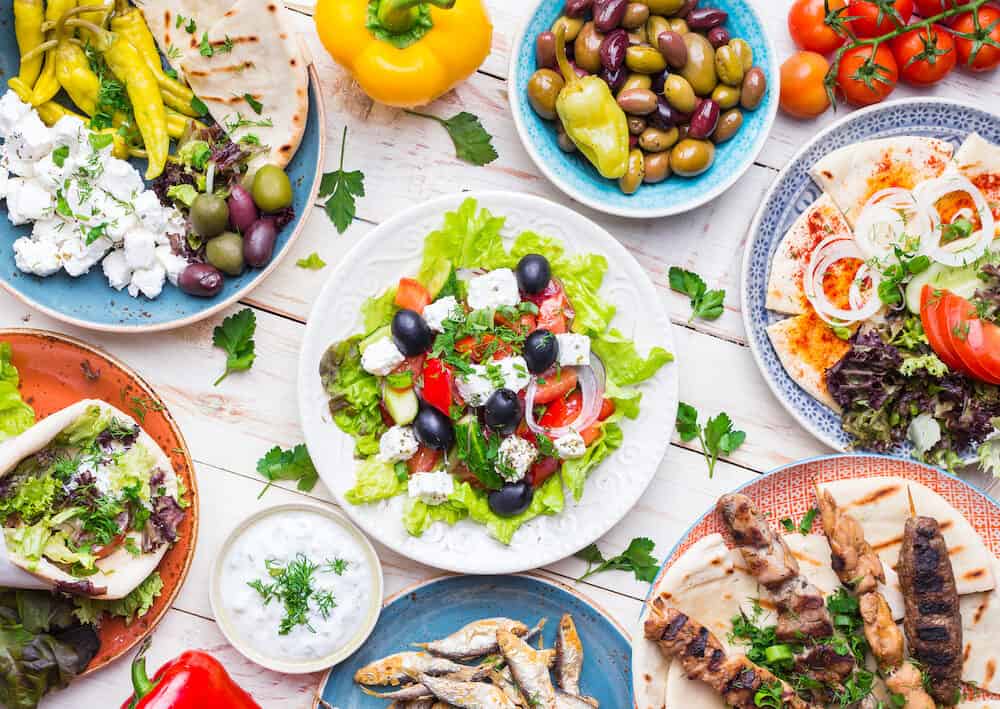
Lamb Kleftiko – Lamb is a very popular dish in Cyprus and is often cooked to perfection. This dish is a perfect example, its name means “thief’s lamb” in Greek and it is slowly roasted in an oven in a clay pot with bay leaves, oregano and red wine, until the meat is juicy, tender and falls off the bone.
The name of this dish originates from a historical story that meat would be stolen and cooked in covered holes so that no one would be able to find the thieves.
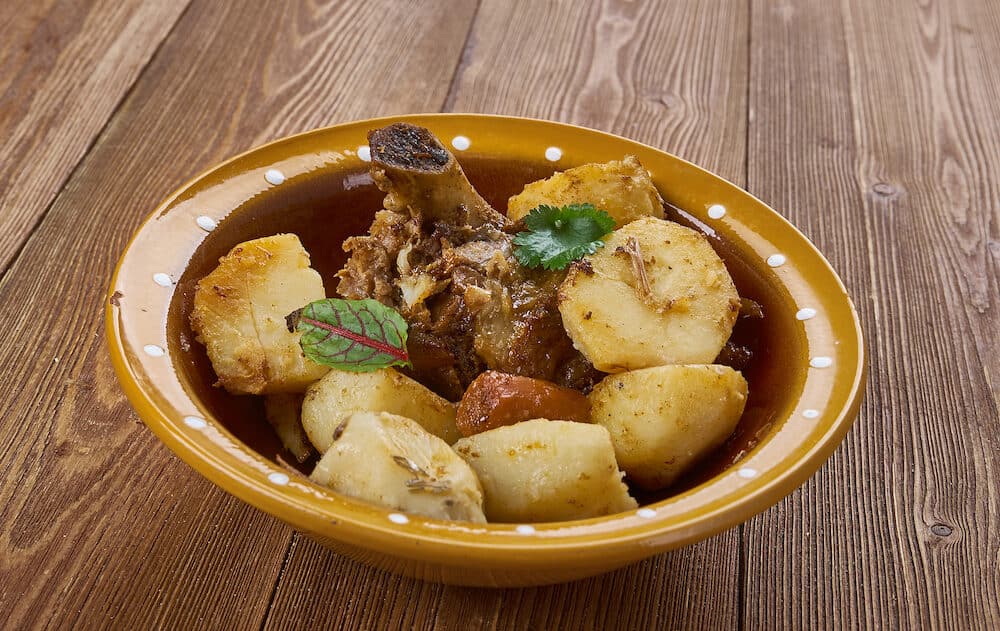
Stifado – this hearty, slow-cooked stew is often made with rabbit or beef and vegetables and is filling, tender and absolutely delicious!
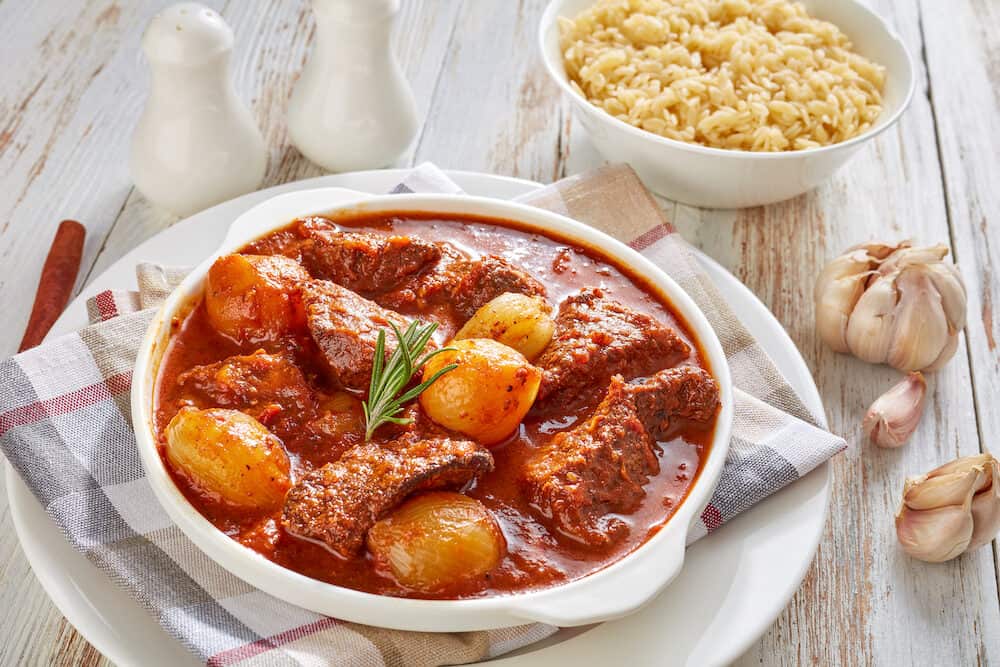
Halloumi Cheese – known also as “squeaky cheese” it is often grilled or fried and has a firm, slightly springy texture and salty flavour. Dished up with a sprinkling of mint, this cheese is absolutely divine.
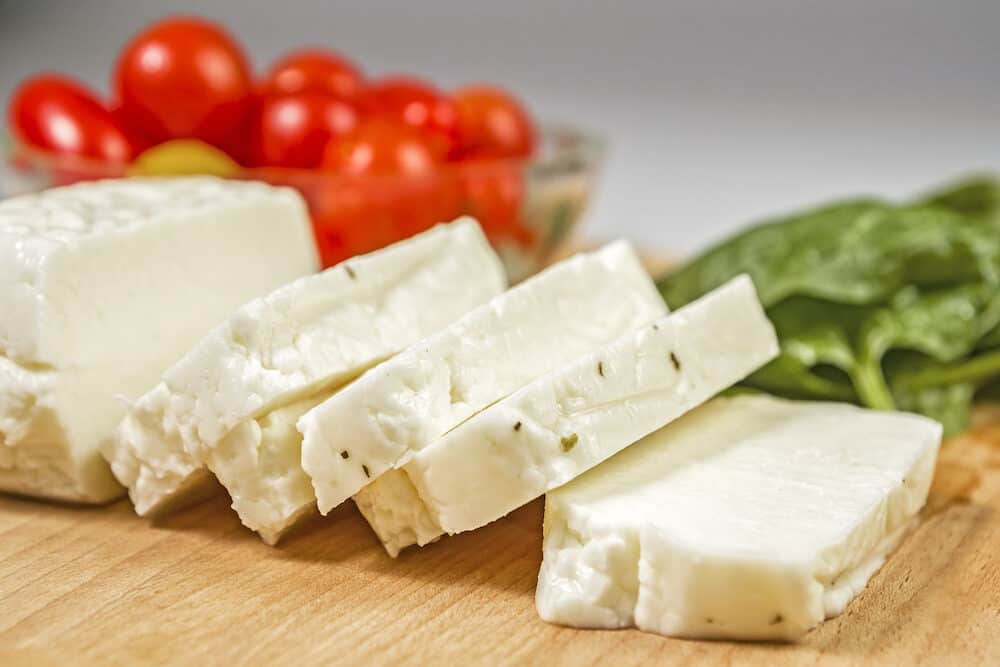
Cypriot Delight – known locally as “Loukoumi” this is exactly the same as Turkish Delight, however, never use that name in Southern Cyprus as tensions are still rife politically between the north and south.
This delicious sweet is made from rose jelly and covered in a dusting of icing sugar, so sweet that your teeth will ache but so moreish at the same time!
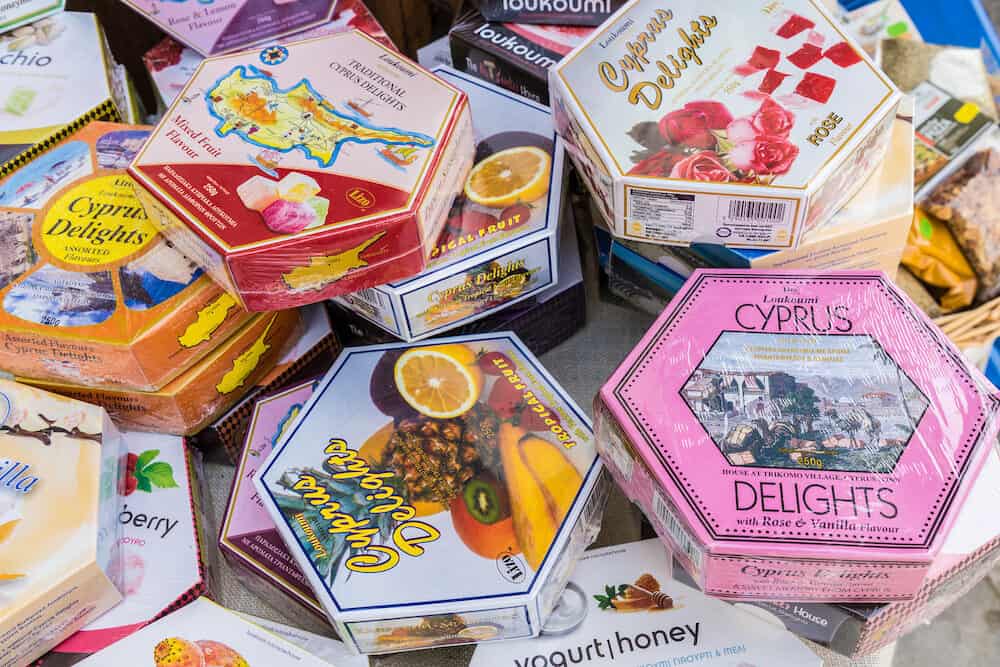
Souvla – Large, slow-cooked meats, such as chicken, pork or lamb are skewered and cooked to perfection over a charcoal barbeque for over an hour. It is a perfect accompaniment to a nice cold beer and may be served with potatoes or salad.
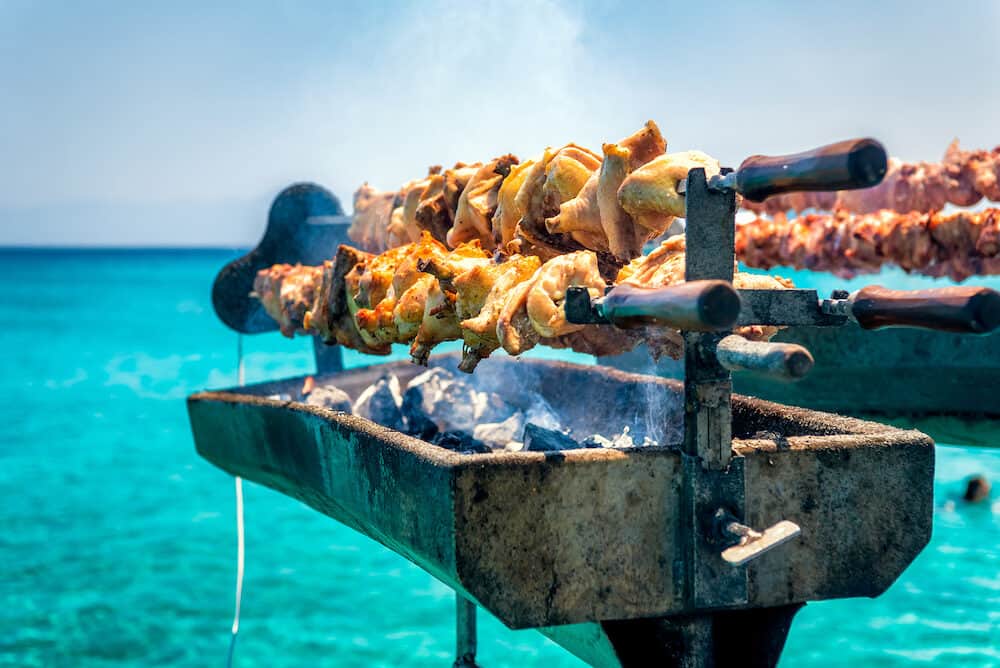
Dolmades – rice and meat are rolled into tight packages using grape leaves and are often a delicious starter for a meal.
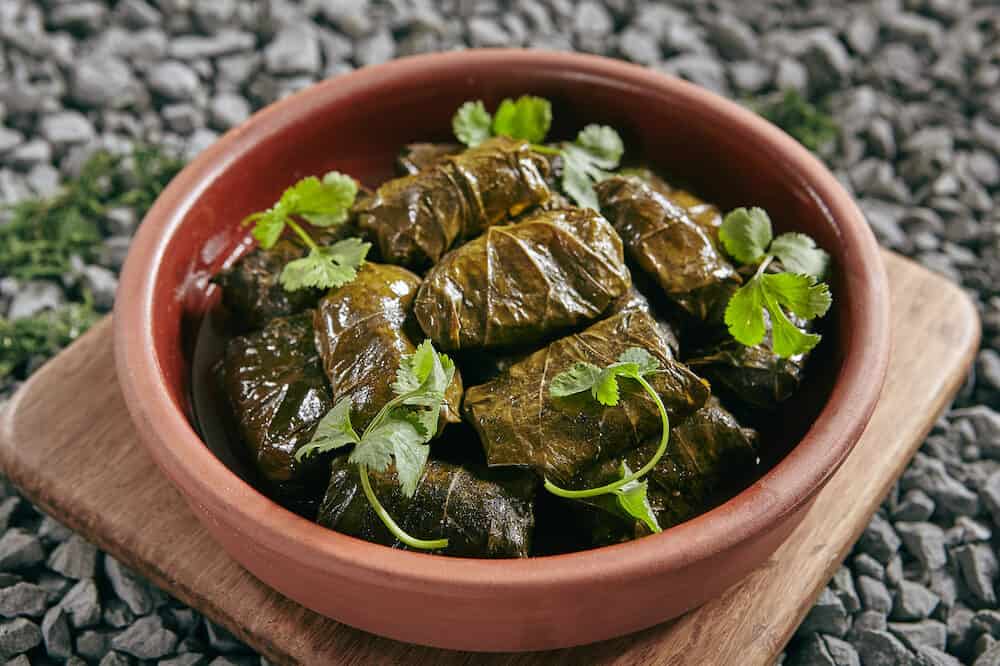
Makaronia Tou Fournou – sometimes known as “pastitsio”, this Cypriot dish consists of large tubes of pasta filled with béchamel and minced pork and sprinkled with halloumi cheese, all this melts into a delicious gooey mess in an oven and served up with a fresh salad.
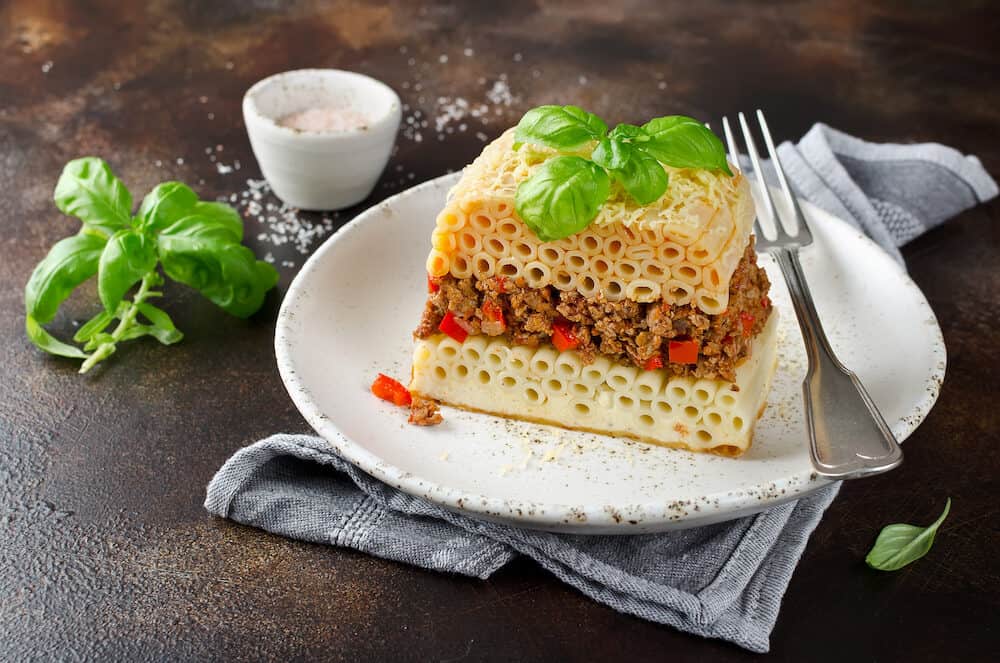
Where to stay in Cyprus
Cyprus has a wide selection of hotels which you can stay in but there is also the option of Agrotourism, which was made famous in the 1990s. During hard times the government began to provide financial aid to villagers who wanted to renovate their cottages as tourist rentals, turning them into Airbnbs.
You can help the local communities as well as experience an authentic way of life in a village. One of the best retreats is the Vavla Rustic Retreat in a charming village called Vavla, where you can stay in traditional stone-walled buildings with a charming orchard and prices start from €54 per night.
If you want to opt for a more traditional style Cyprus hotel, here are the best budget options:
Where to stay in Southern Cyprus:
Lordos Beach Hotel – this hotel has all the facilities and bells and whistles, including air-conditioned rooms, restaurant, bar and three (yes, three) swimming pools! It is located right on the beachfront at Pyla and makes a perfect stay for couples or families.
Capital Coastal Resort and Spa, Paphos – Another large hotel with plenty of facilities including free breakfast buffet, a spa, airport shuttle service (for a fee), outdoor tennis court and swimming pools.
Amphora Hotel and Suites, Paphos – This hotel is close to Alykes Beach and includes free parking, an outdoor pool, free buffet breakfast, outdoor tennis court and fitness centre and a location which offers stunning sea views.
The hotel was once the site of a winery and the air-conditioned rooms have a simple and elegant style.
Mediterranean Beach Hotel, Limassol – This highly-rated hotel has air-conditioned rooms with balconies, free breakfast buffet, free parking, spa and babysitting services, health club and aerobics classes as well as a stunning swimming pool.
The location of the hotel is excellent making the town of Limassol easily accessible and is within easy driving or walking distance to Amathus Beach and Castella Beach.
Where to stay in Northern Cyprus:
Hanna Koumi Boutique Hotel, Kormakiti – This family-run hotel is situated in Kormakiti and is a perfect hotel for a quieter stay, attention to detail and excellent facilities set to a backdrop of mountain views make this place a charming budget stay. The family are sure to make you feel at home.
Gul Hanim House, North Nicosia – This hostel is a restored traditional house repurposed as a budget hotel, it is situated in Northern Nicosia and makes a perfect base for exploration.
Being only a short drive away from some of Nicosia’s monuments such as the Kyrenia Gate and there is a shared kitchen and breakfast is included, and breakfast can be served outdoors in the beautiful and peaceful terrace surrounded by gardens.
Kemerli Konak Boutique Hotel, Girne/Kyrenia – This popular boutique hotel is situated just a six-minute drive from the city centre of Kyrenia and has a fantastic onsite restaurant serving up local Cyprus cuisine as well as free car parking, outdoor pool, garden and terrace.
Rooms look over the swimming pool or mountain views and are equipped with all the mod cons that you want in a modern hotel. Major sites such as the Bellapais Monastery and Girne Castle are only a short drive away.
Manolya Hotel, Kyrenia – Just outside of Kyrenia you can find the charming coastal town of Lapta where this hotel is based, with views over the Mediterranean sea. Rooms have sea or mountain vistas and there is also a pool and a gorgeous outdoor terrace where you can have breakfast which is included in the price.
The hotel has excellent restaurants serving local cuisine, there is a scuba diving school on site and tours can be organised by the hotel as well as an airport shuttle service.
Gillham Luxury Boutique & Vineyard, Kyrenia – If you want to enjoy Northern Cyprus in style there is no better place than Giliham Luxury Boutique and Vineyard in Kyrenia.
The facilities on site include a swimming pool, fitness centre, spa and wellness centre and a hammam where you can relax after a day of exploring and hiking. There is also breakfast included and a fantastic on-site restaurant offering Mediterranean cuisine.
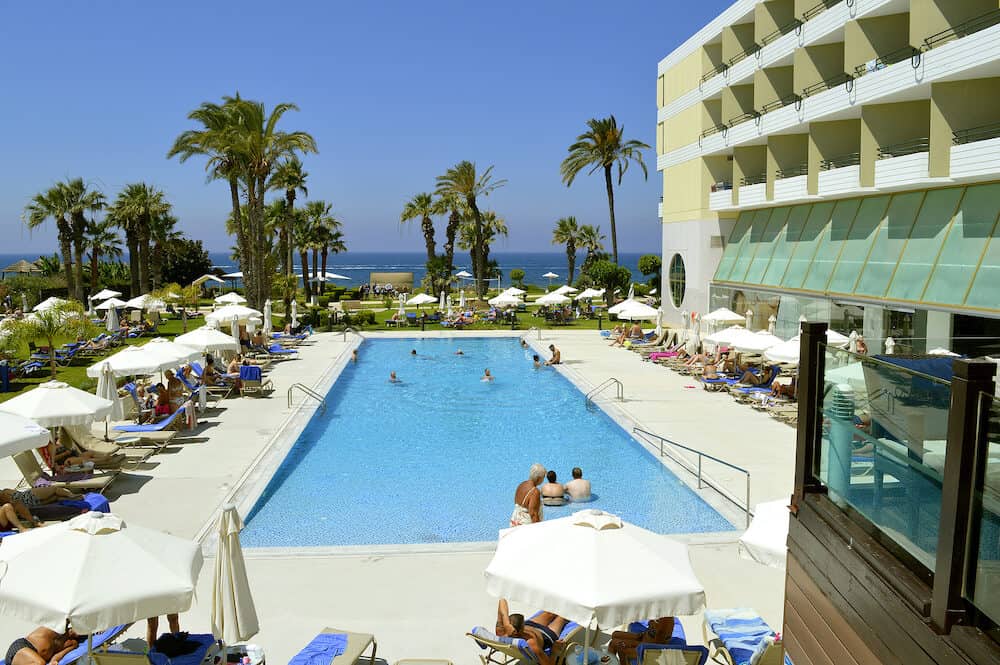
Tours to do in Cyprus
Hop on one of the beautiful sailboats to give you a different view of the island and coastline, San Antonio II Sunset Cruise leaves from Ayia Napa and provides an excellent afternoon with amazing sunset vistas, swimming, snorkelling and a buffet dinner on-board.
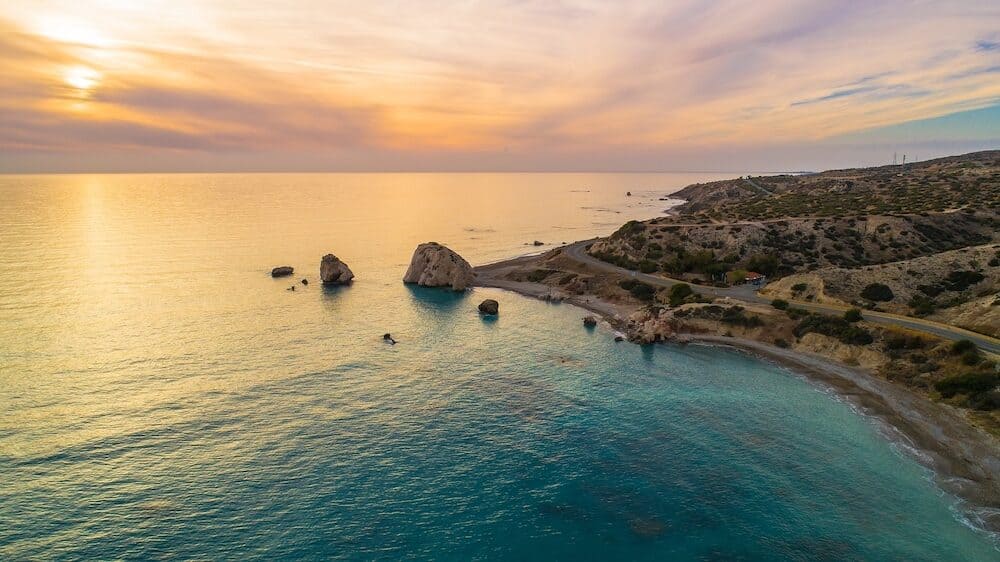
This tour will take you to a local winery called the Oak Tree Wine Cellar, where you can learn more about the culture of making Cypriot Wine as well as taste 10 Cypriot wines for yourself.
The tour also includes time to wander the streets of Larnaca’s old city before returning to your hotel and transfers from Ayia Napa and Protaras are included.
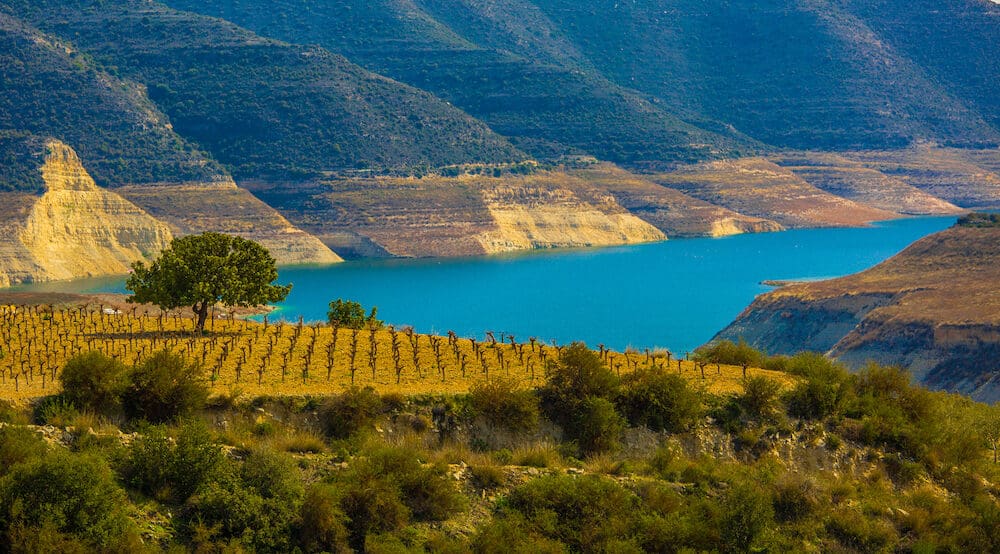
If you want to see the best of Kyrenia, this is a perfect half day tour where you will explore the Kyrenia mountains knowns as the “Five Finger Mountains”, visiting the St. Hillarion Castle and Bellapais Abbey where you can learn about culture and history of this fascinating region. Lunch is organised by the harbour of Kyrenia where you will then explore fortified castle in Kyrenia.
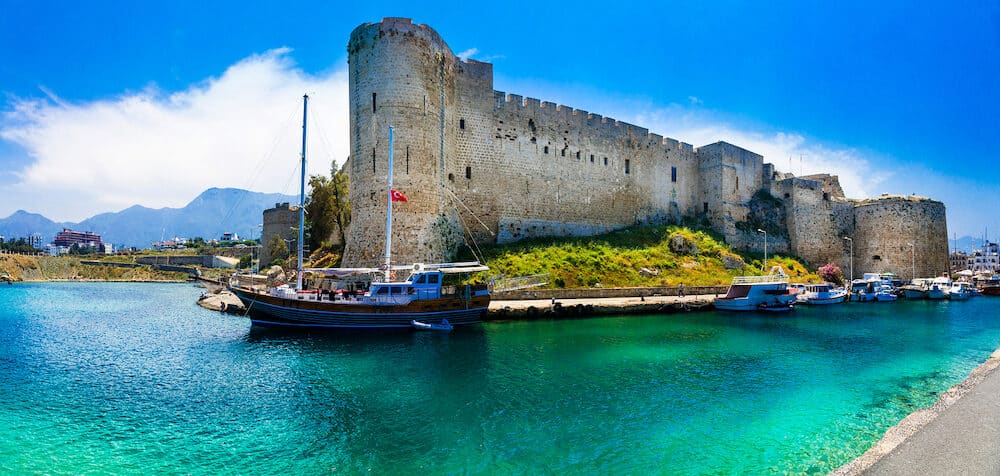
Day trips from Cyprus
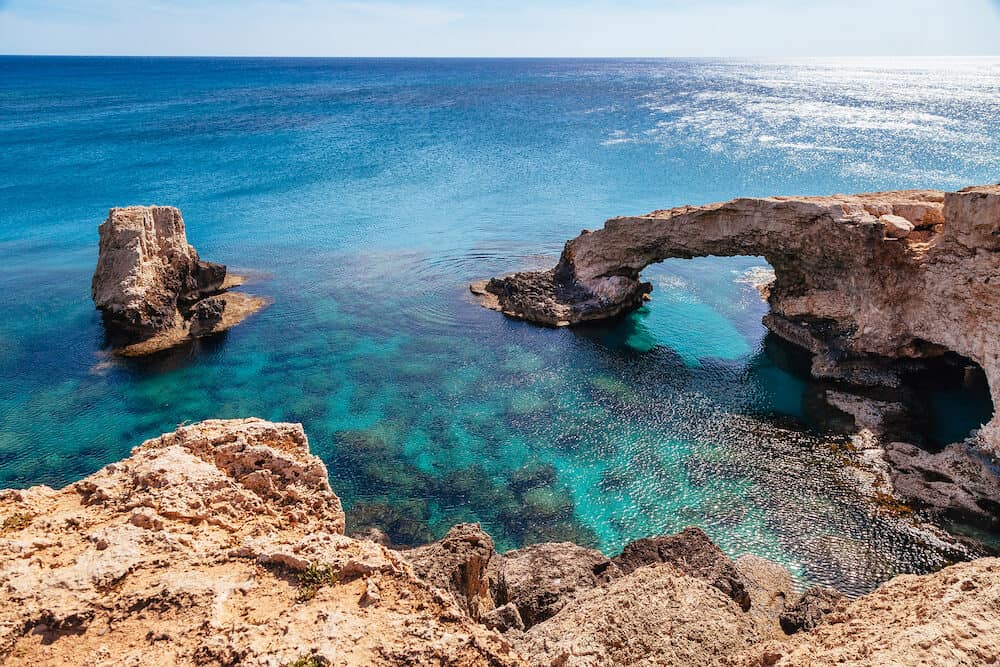
Discover the history and culture of Cyprus
This full day tour will give you an opportunity to learn about the history and culture of Cyprus. On the tour you will explore the famous St. Paraskevi church and its five domes, which makes it a unique architectural structure.
The St. Neophytos Monstary and learn how to make Loukoumia or Cypriot Delight, discover the process of making halloumi and you will have a chance to taste the local wines at a local winery. The trip leaves from Paphos Town.
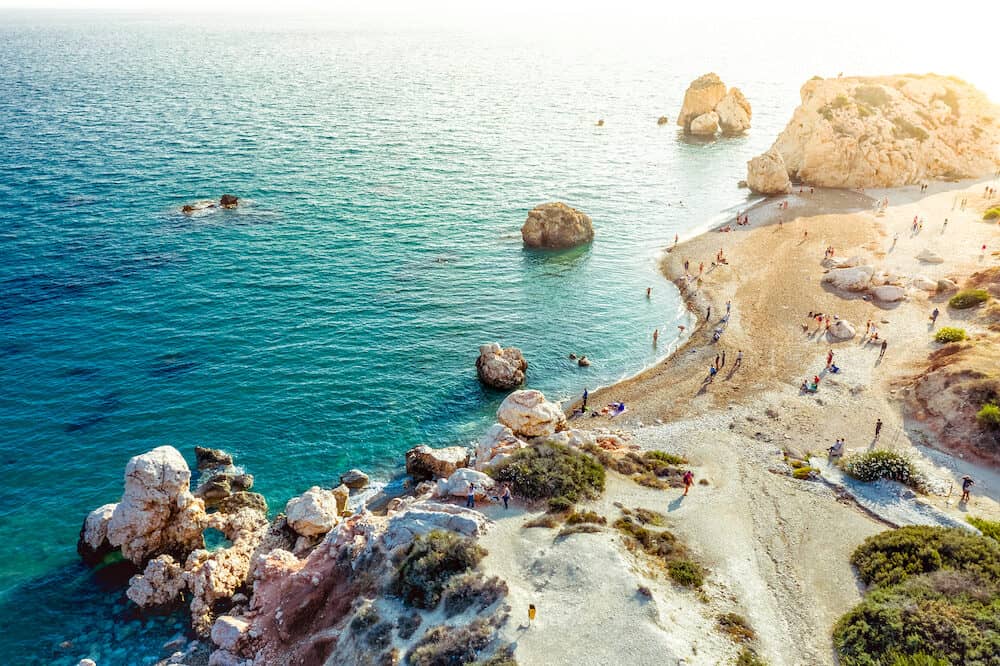
If you want to explore Karpaz Peninsula with an experienced guide, this 9 hour tour will allow you to explore the rugged nature of this region. The tour includes a visit to a 12th century church, Kantara Castle atop the magnificent Kyrenia mountains, and the castles of St. Hillarion and Bufavento.
Lunch takes place in an eco-village followed by a visit to the many wild donkeys that roam around the peninsula, finishing off with a visit to the beautiful Golden Beach before returning to Kyrenia.
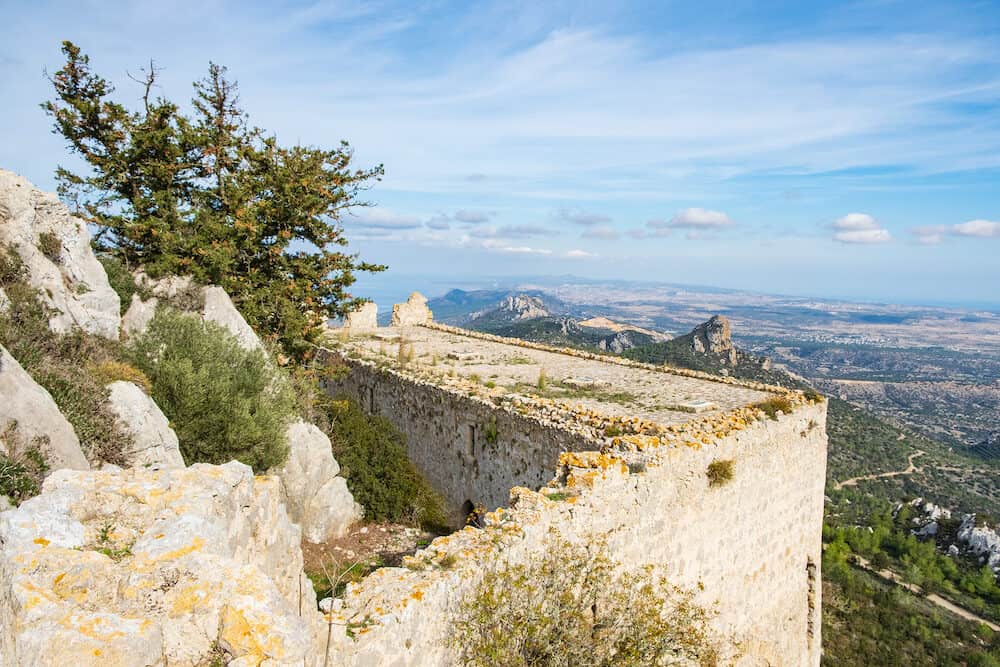
Recommend budget tours in Cyprus
- Authentic Cyprus Historic Day Tour from Paphos
- Full-day Famagusta, Varosha, and Salamis Tour from Paphos
- Cyprus Wine Tasting in Larnaca
- Salamis Ancient Kingdom and Famagusta from Limassol
- Standard 50HP Self-drive boat hire
- Black Pearl Pirate Ship from Ayia Napa Hotels
- Double Trouble Adventure Package in Limassol
- Pafos and Kourion Coach Excursion from Protaras
- Mediterraneo Catamaran Day Cruise from Larnaca
- Cyprus Wine Tasting in Larnaca with Transfers from Ayia Napa and Protaras
- Paphos and Kourion Coach Excursion from Ayia Napa
- Full Day Jeep Safari Akamas Expedition from Paphos
If you’d like to save it for later, please save it to Pinterest.
